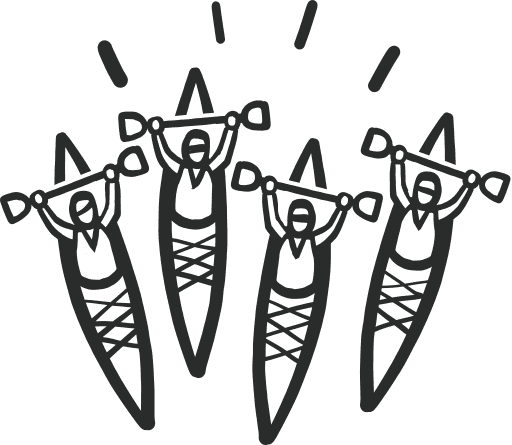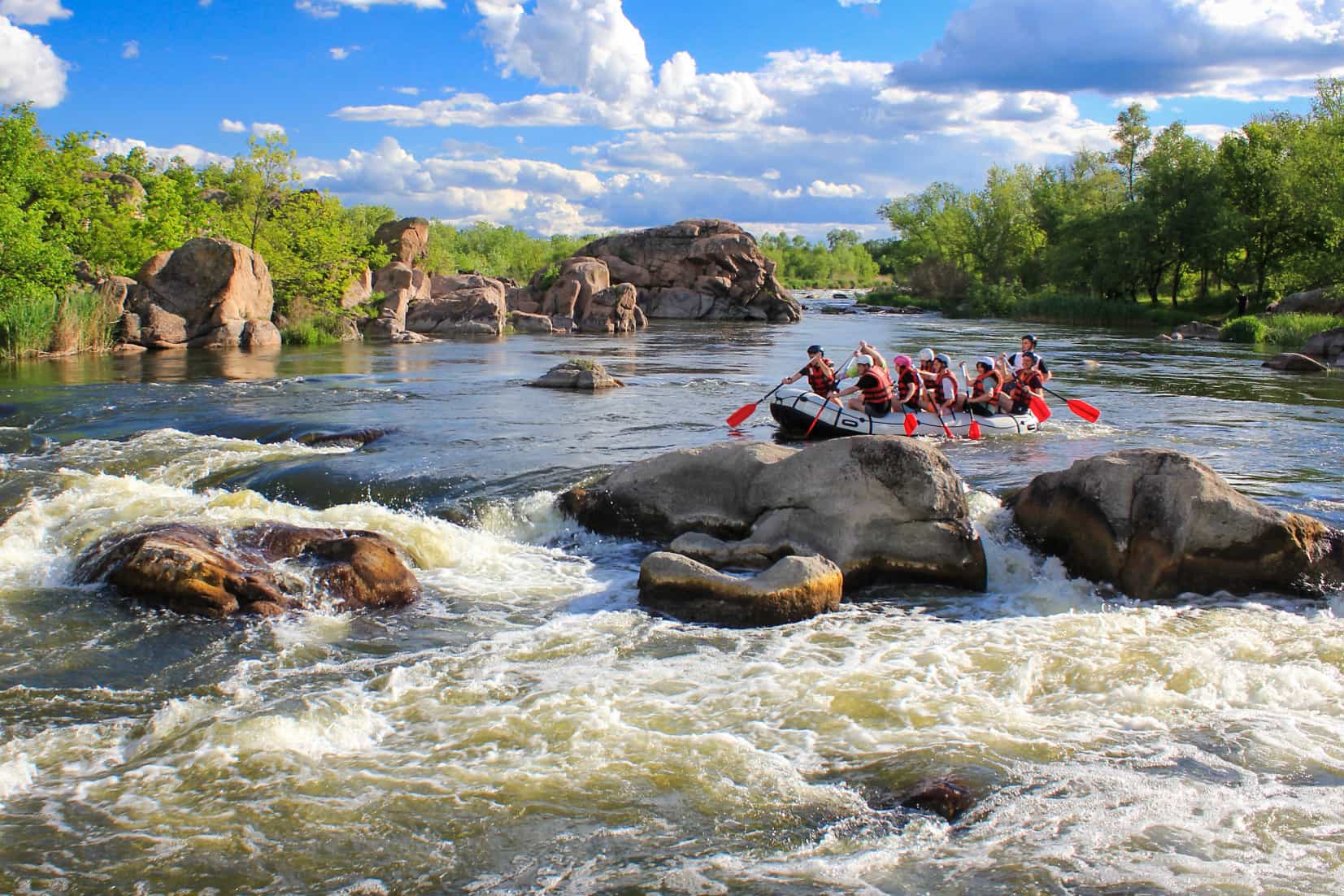
250km Coast to Coast Expedition through Costa Rica
Hike, bike and paddle yourself from the Pacific Ocean all the way to the Caribbean Sea
What's Included?
Activities & Certified Guides
All itinerary activities with expert, local, English-speaking guidesAll accommodation
4 nights in hotels, 7 nights campingMeals
All breakfasts, 8 lunches and 7 dinnersTransfers
To and from the airport and everything in betweenEquipment & Permits
All your biking, rafting, kayaking gear; camping equipment; all permits and entry feesSmall Like-minded Groups
Solo-friendly by design, join our small n’ sociable groups of up to 16 like-minded, active and outdoorsy people…
…
What's it like?






























Cross the width of one of the most biodiverse countries on Earth under your own steam, from one lush coastline to another
Journey through cloudforest, mountain villages and virgin rainforest teeming with wildlife before heading up and over the Continental Divide
Rest up at beautiful eco-camps on the banks of the pristine Pacuare River and cool down with swims and dips at secret swimming spots in the rainforest
E‑bike only departures are available via the Dates section below for a little extra boost on the climbs
Key Information
Day 1
Welcome to Costa Rica
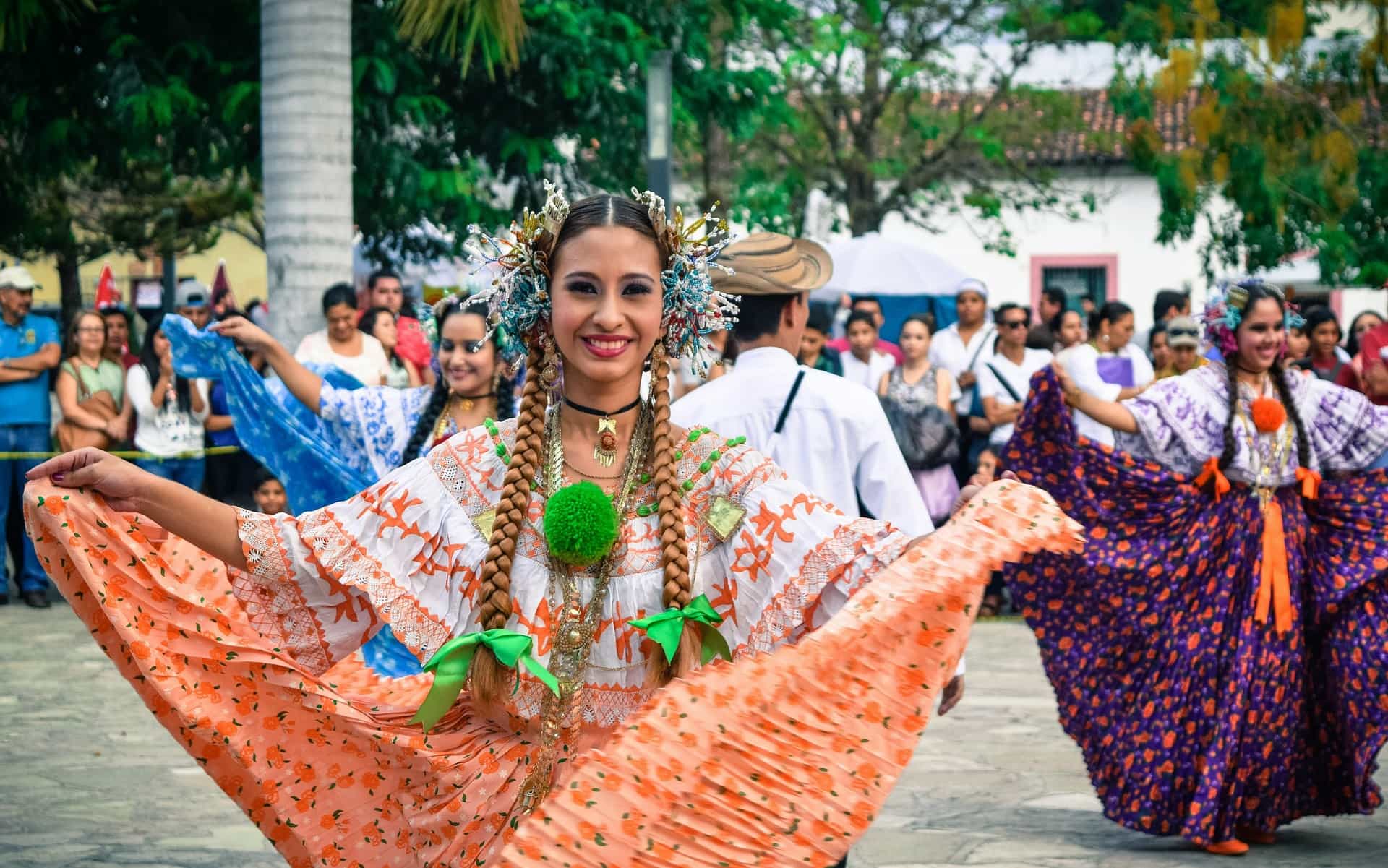
Fly into beautiful Costa Rica and head to your hotel in San José. Depending on what time you land, explore, or just relax and get ready for the start of your adventure.
Day 2
The Pacific Coast
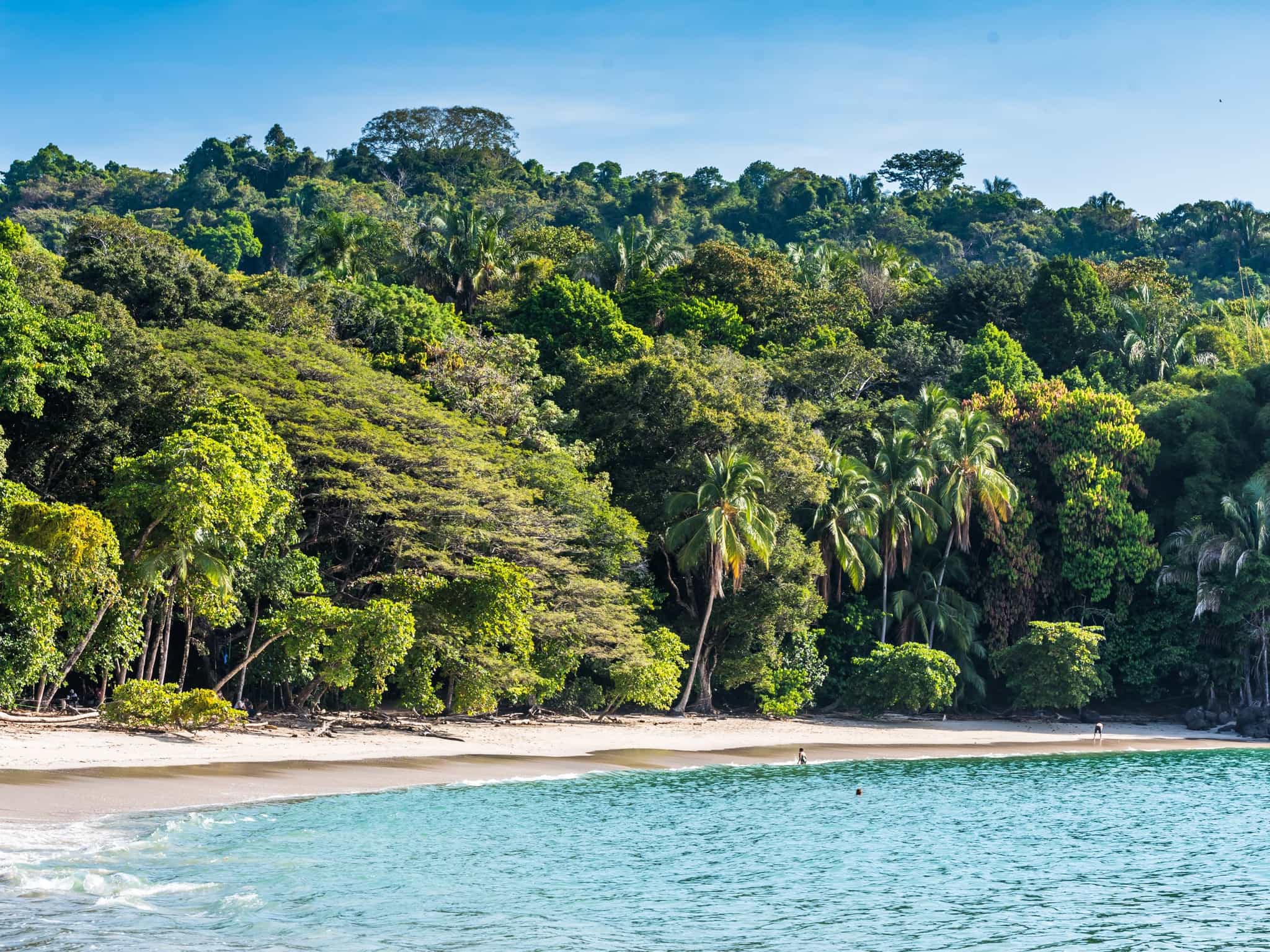
Hop on a bus bound for the Pacific Coast – the starting point for your coast-to-coast adventure. This will be your last motorised vehicle for the next 10 days! Spend the night in the quiet fishing village of Quepos, next door to Manuel Antonio National Park. Relax on the beach, visit the park, famous for its abundant wildlife and then have dinner and a group briefing with the rest of your team.
Day 3
The adventure begins
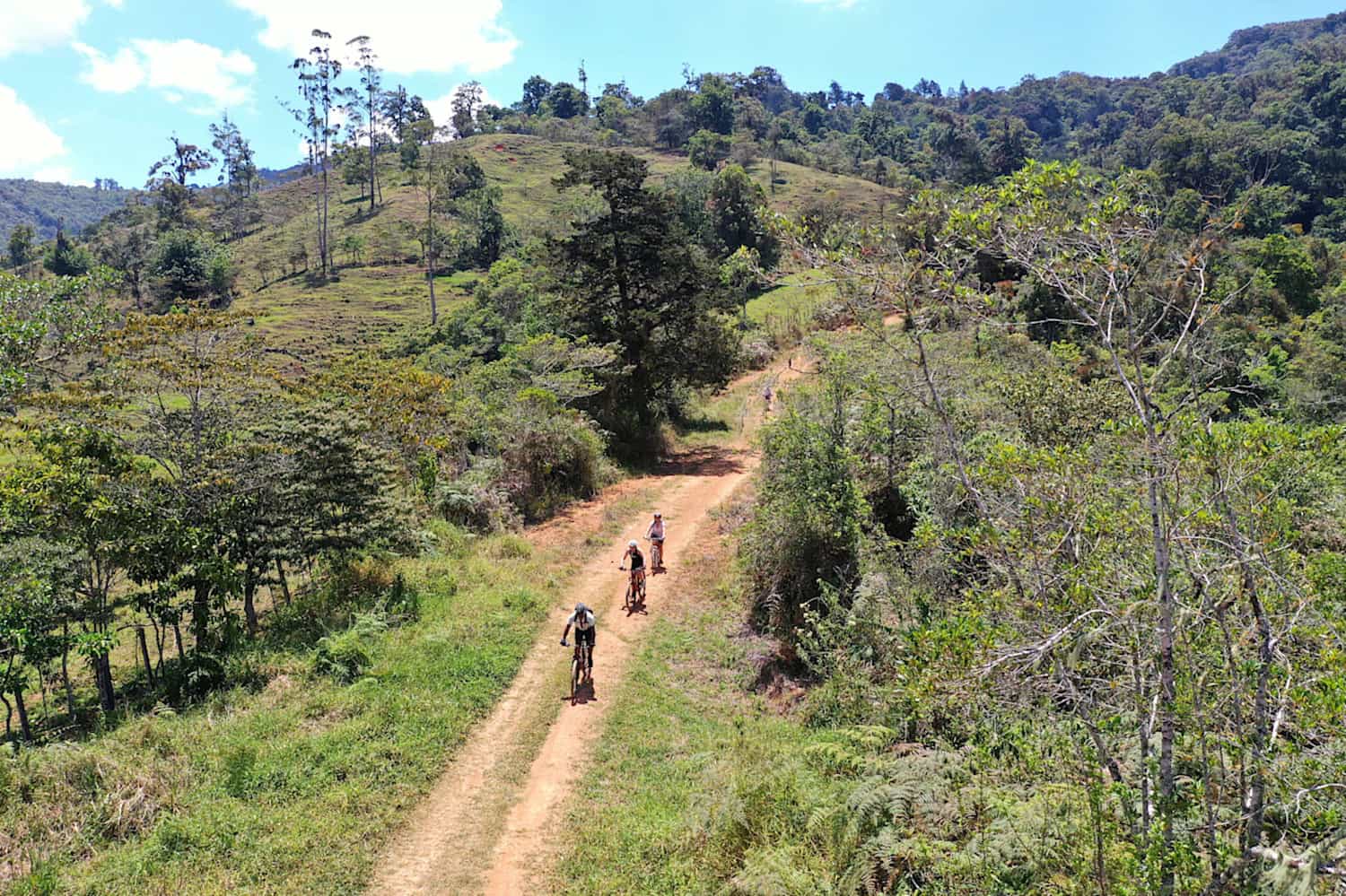
Hiking
Cycling
Fuel up on some fresh fruit and coffee, then set off on your bike. There are some steep sections straight away, although you'll be instantly rewarded with some sweeping views of the Pacific coastline. Reach the small town of Esquipulas and have a bigger, second breakfast before swapping your bike for hiking boots and heading deep into the cool mountains of central Costa Rica. Camp for the night in the valley of Naranjillo and listen to the sound of nature, uninterrupted.
Day 4
Santa Maria Village
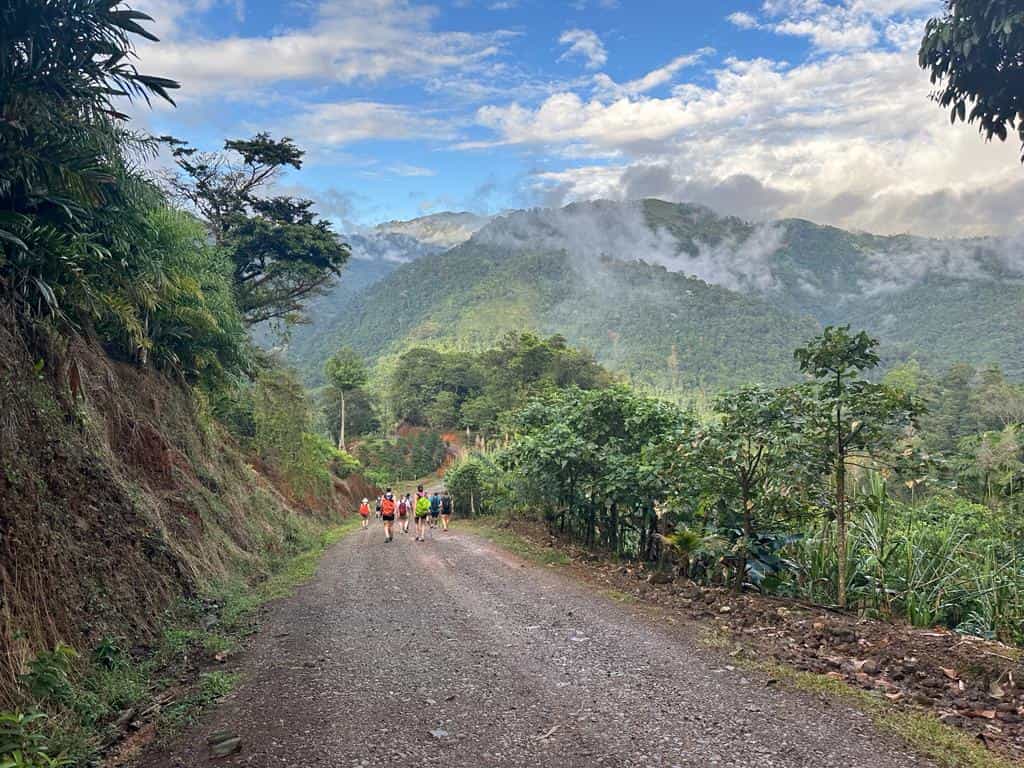
Hiking
Cycling
Start with a hike towards the Continental Divide before tackling 'Cemetery Hill' – a challenging 3km climb. From the pueblo of San Lorenzo, grab your mountain bike and set off for the quaint village of Santa Maria. Load up on some typical Costa Rican food and then rest up in a comfortable cabin for the night.
Day 5
Over the divide
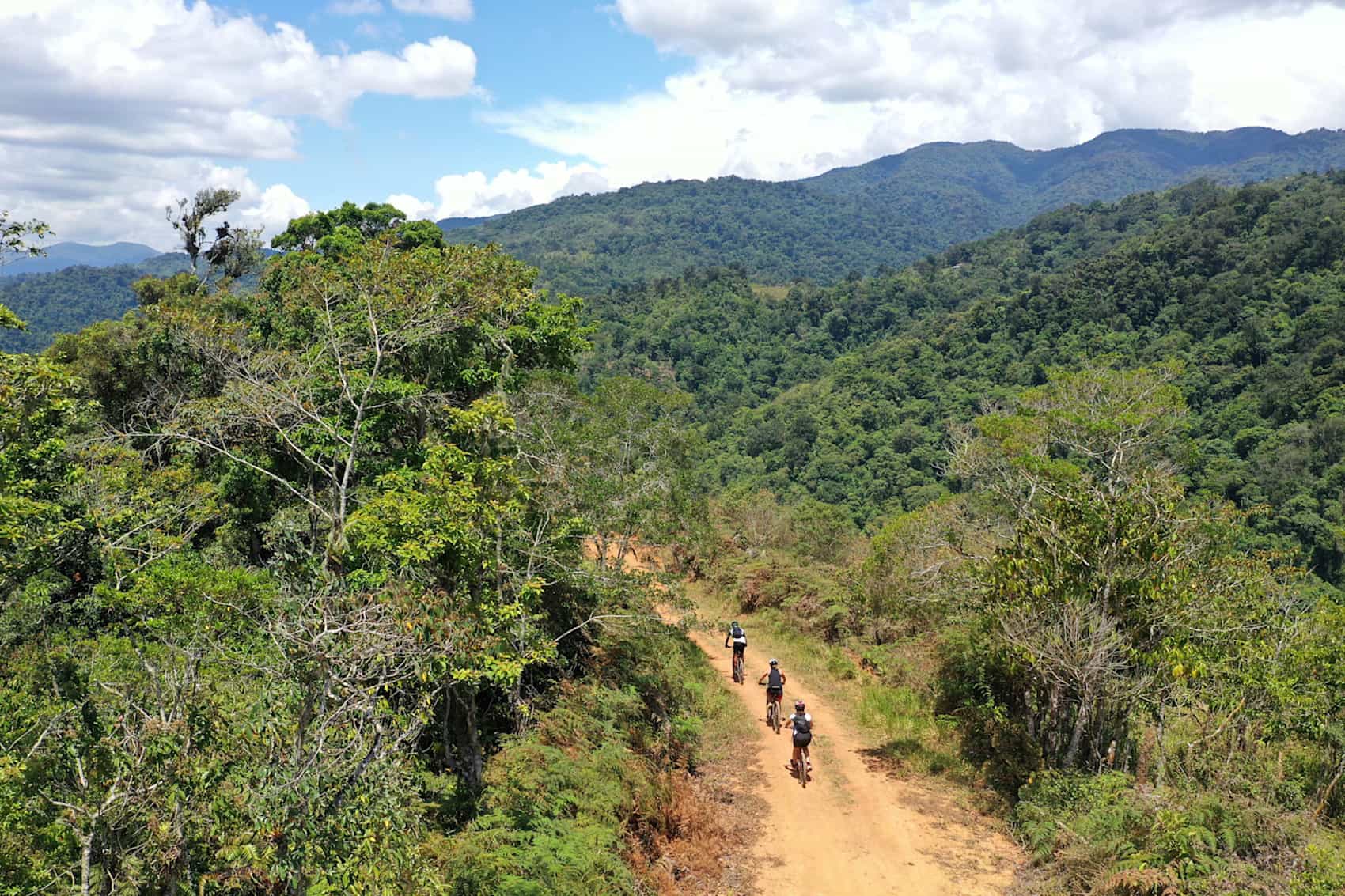
Cycling
Time to tackle the toughest and steepest climb – a 14 km uphill stretch to the Continental Divide. This section is on a tarmac road which makes the going easier during the climb. At 2330 metres, it's also the highest point of your journey. Of course, what goes up must come down, so the rest of the day is off-road cycling at its best – downhill along dirt roads and smooth trails. Finish the day in the beautiful Orosi Valley, where rich pastures and dark green forests of coffee carpet the land.
Day 6
Tapantí cloud forest
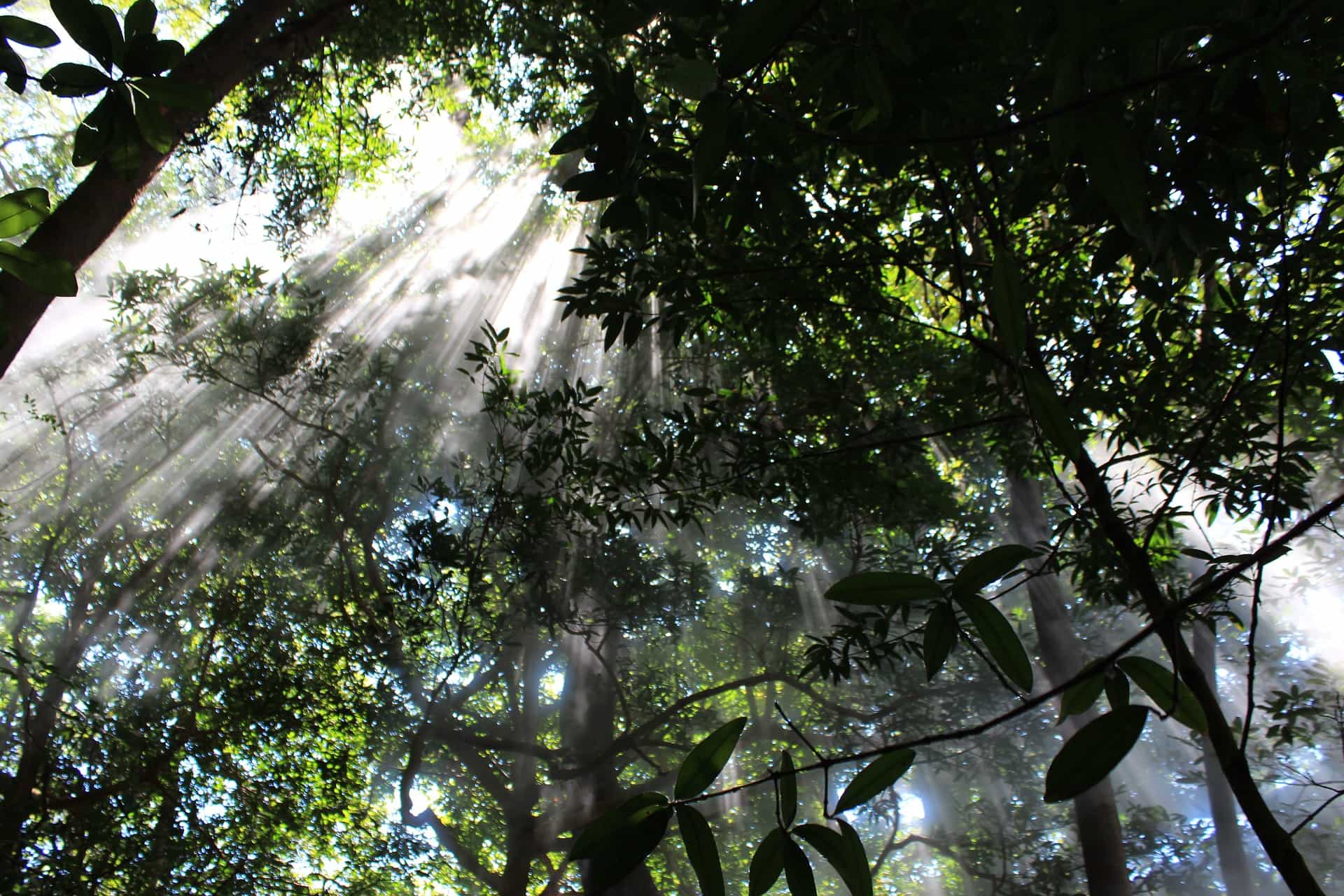
Hiking
Cycling
Cycle beside the river and then into the vast Tapantí National Wildlife Refuge. Take a break from the bike and head deeper into the mountains on foot – far from where wheels could ever take you. Trek through the cloud forest and feel tiny beneath thousands of trees covered with ferns, bromeliads and mosses. After reaching flatter ground, camp near the small settlement of Taus and have a big dinner under the stars.
Day 7
The Pacuare River
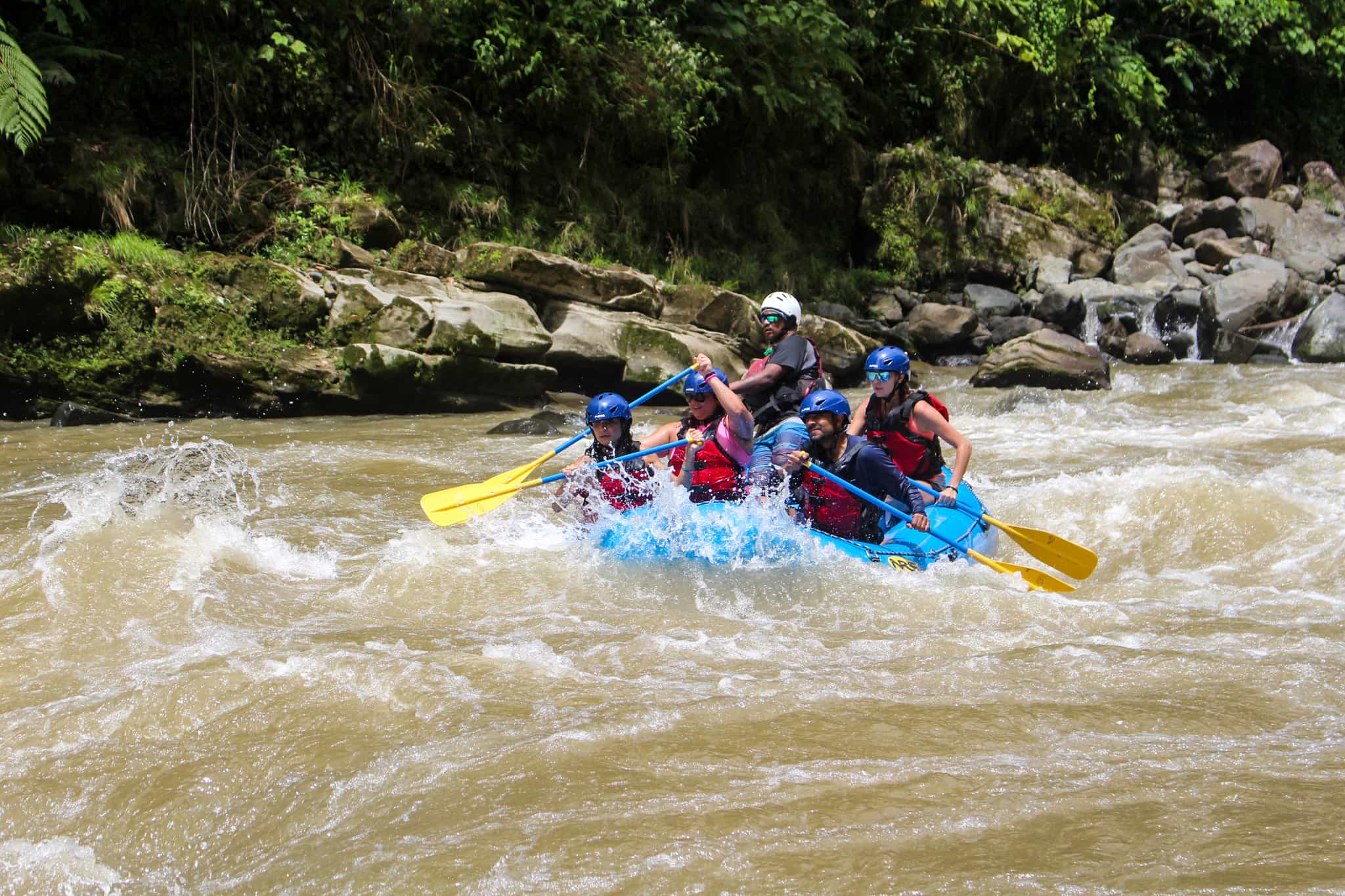
Cycling
Rafting
Continue cycling towards La Cruz, the gateway to the raging Pacuare River. Eat lunch on the river's banks before loading up your raft to paddle through pristine rainforest, canyon cliffs and past deafening waterfalls. Set up camp for the night at El Nido del Tigre, named after the giant indigenous ginger plants that carpet the area, nestled between the sounds of the rainforest and the river. There will be some free time to explore this lush environment – be sure to look out for toucans, boa constrictors and sloths – or you can just relax in a hammock.
Day 8
Rest day
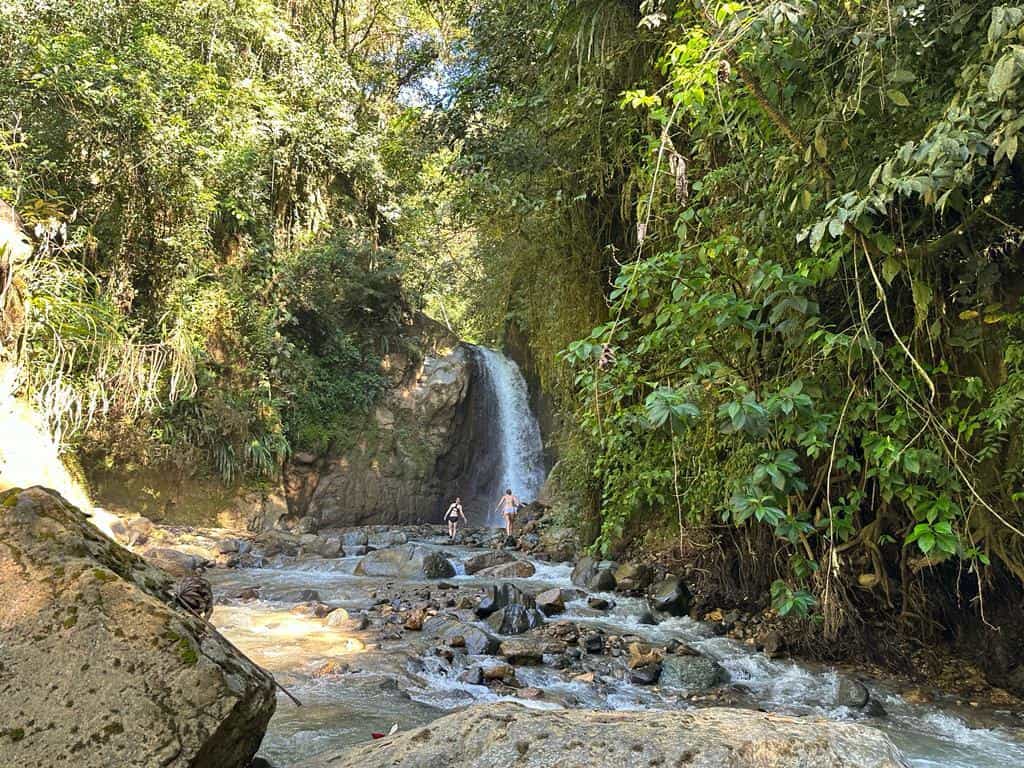
Enjoy some well-earned downtime at this gorgeous location. Explore the primary forest, swim in the river, visit some nearby waterfalls and swimming holes where the water is so pure you can drink from them, or just put in some more hammock time. The area of rainforest around your camp is in a pristine state and rarely visited – perfect for a peaceful day.
Day 9
White water

Rafting
Continue along the Pacuare, passing through river-carved canyons. There are also some exhilarating Class II and III rapids to manoeuvre, as well as gentler sections where you can peer into the rainforest and spot wildlife. Take a break from rafting and hike to some cascading waterfalls and have lunch on the shore. Stop for the night as the forest gives way to the banana plantations at Finca Pacuarito and enjoy the rapidly changing scenery.
Day 10
The Caribbean Sea
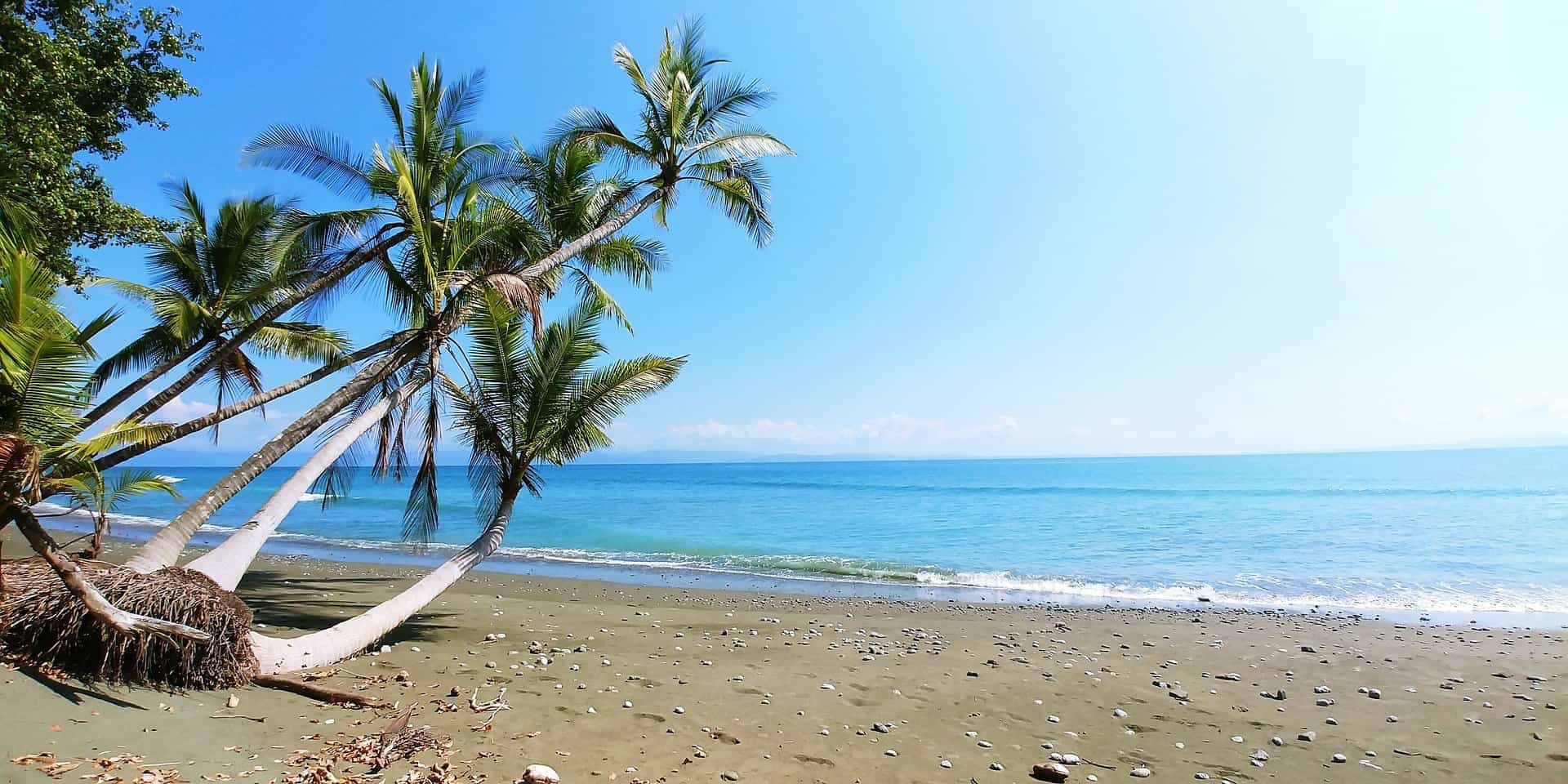
Cycling
Kayaking
Jump back on your bike and ride through the plantations to the town of Freeman, then board your kayak for the final leg of the journey. Leave the rapids of the highlands behind and paddle into the tropical lowlands, before finally drifting into the Caribbean Sea. Celebrate with a drink in the surf and some beach time – you've earned it!
Day 11
Final beach time and back to San José
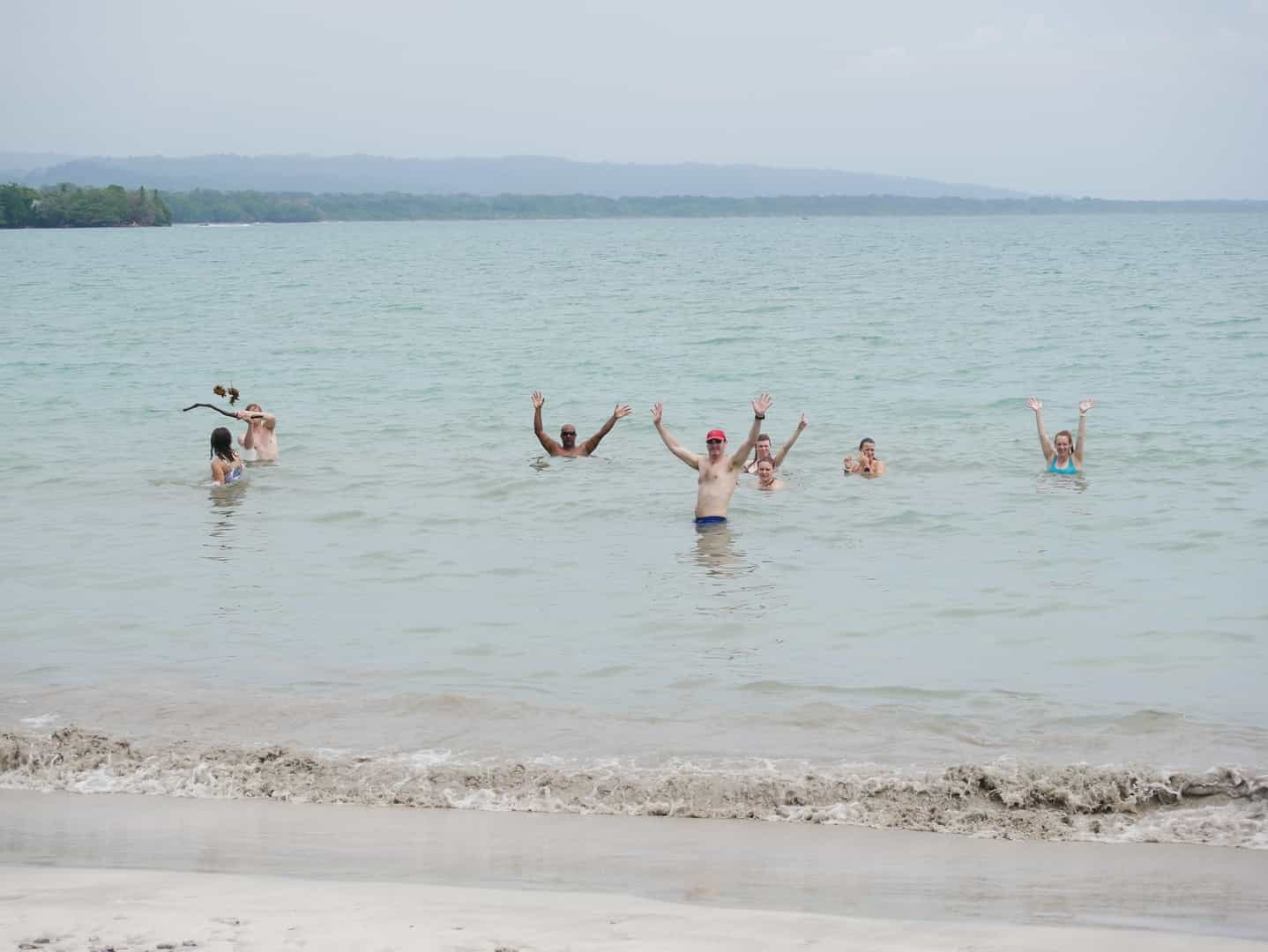
Enjoy some final downtime on the sand and then drive back to San José through the cloud forest and misty mountains of Braulio Carrillo National Park. Toast your epic coast-to-coast achievement. Not everyone can say they've crossed an entire country!
Day 12
Goodbye Costa Rica
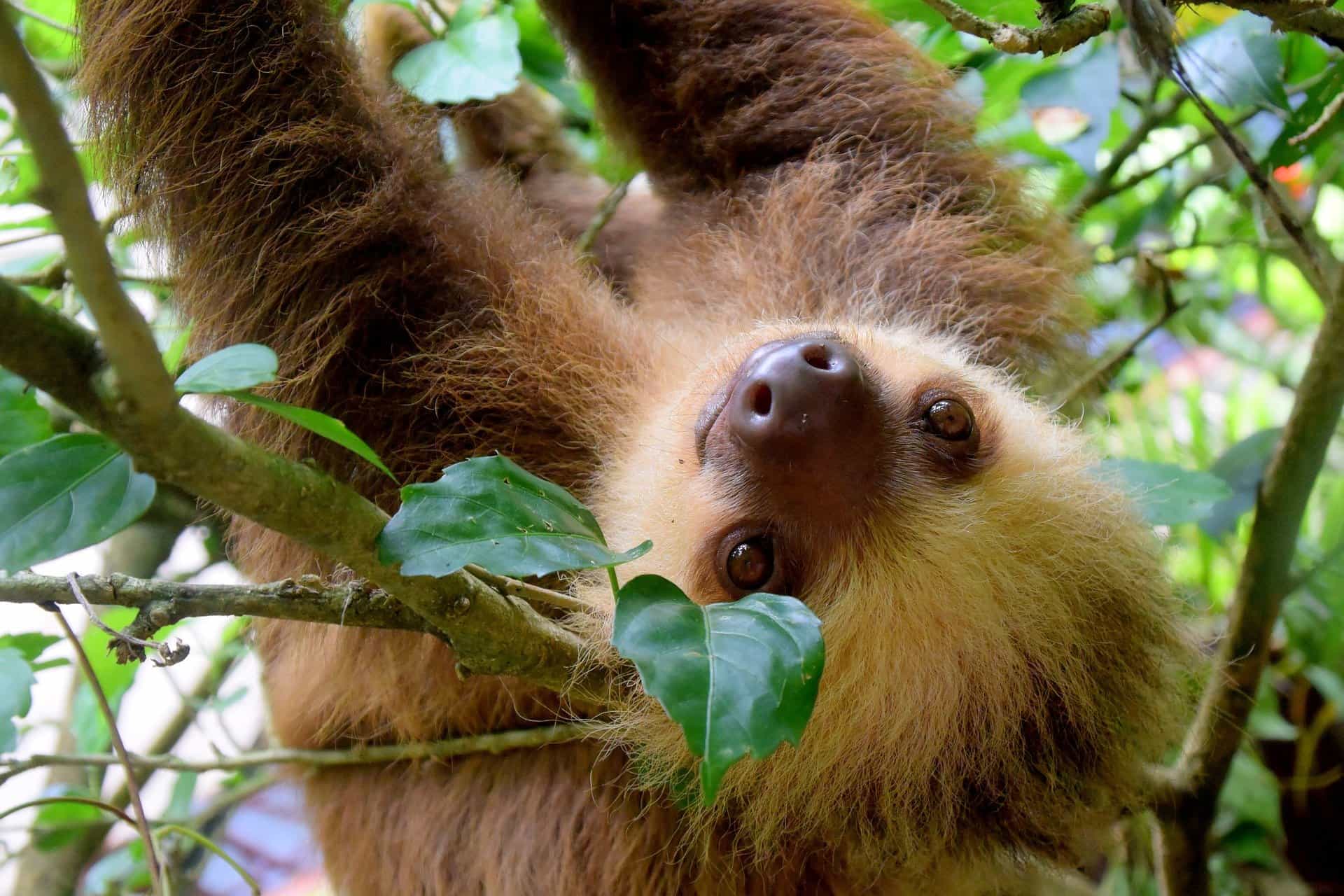
After breakfast, head back to the airport in time for your flight home, or explore a little more of this incredible country.
The Area
Logistics
Starts
Juan Santamaría International Airport, San José
Anytime on Day 1
Ends
Juan Santamaría International Airport, San José
Anytime on Day 12
Transfers
Airport transfers are included on arrival and departure days. Just let your host know your flight details. If you arrive and depart outside of the set days, your host can arrange an airport transfer for you for an extra cost. See Optional Extras for the price.
Travel options
There are regular flights to Costa Rica from major airports across the UK and Europe.
Day 1
Breakfast
Lunch
Dinner
Day 2
Breakfast
Lunch
Dinner
Day 3 – Day 4
Breakfast
Lunch
Dinner
Day 5
Breakfast
Lunch
Dinner
Day 6 – Day 9
Breakfast
Lunch
Dinner
Day 10
Breakfast
Lunch
Dinner
Day 11
Breakfast
Lunch
Dinner
Day 12
Breakfast
Lunch
Dinner
What is the food like?
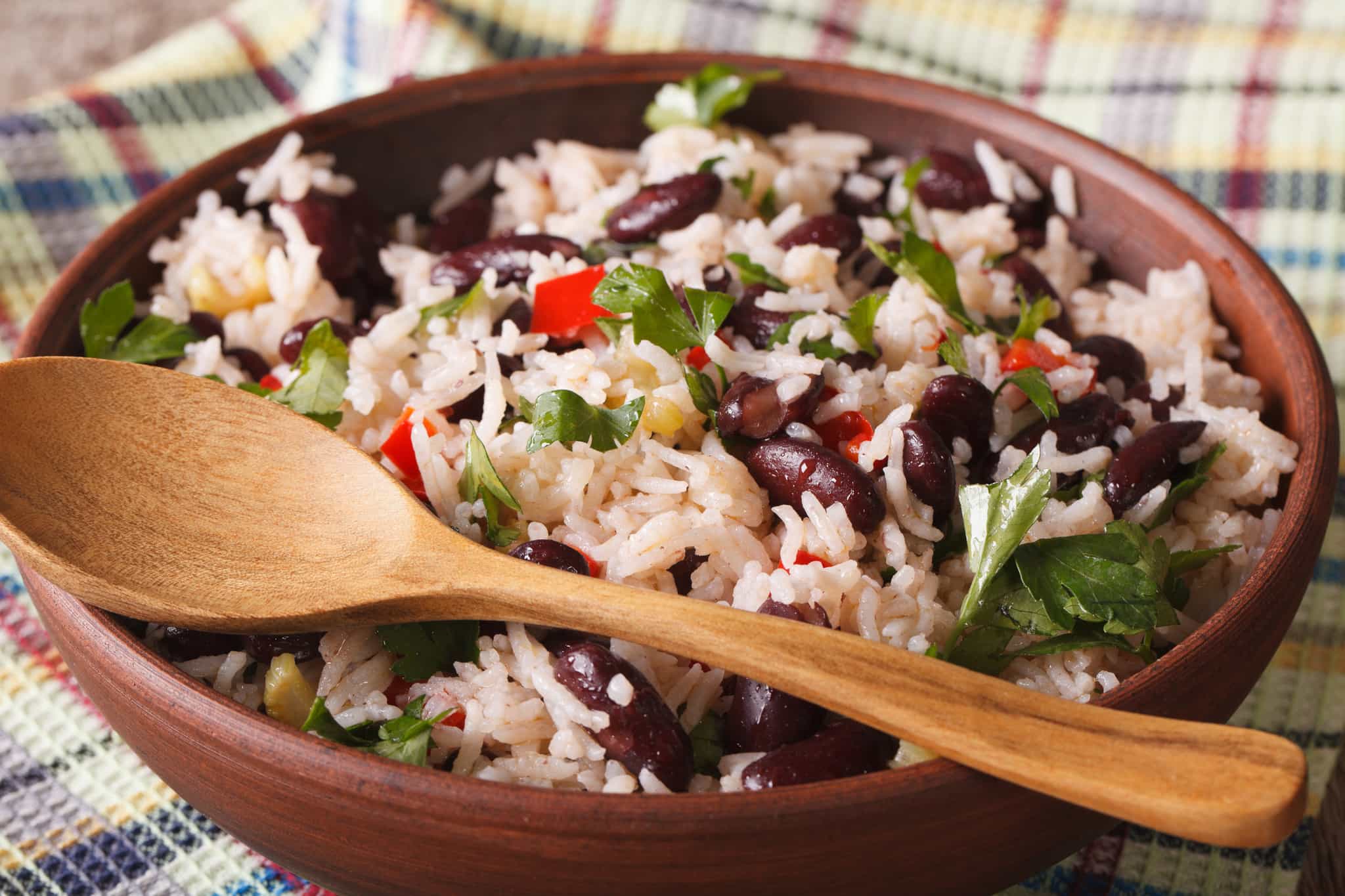
A classic plate of Costa Rican food includes rice and beans, salad, fried sweet plantains and either fish, chicken, pork or beef. Some will also have cheese, french fries or grilled vegetables. Gallo pinto is another classic Costa Rican staple: slow-cooked rice and beans with onions, peppers and coriander (cilantro). This dish often forms part of the Costa Rican breakfast: gallo pinto with eggs, fried cheese, sweet plantains and homemade corn tortillas. There'll be plenty of other Latin American and tropical foods available, and on both coasts you’ll find pipa fria: a whole, cold, fresh coconut.
Vegetarians, vegans and other dietary requirements and allergies can be catered for - please just request on your passenger info form.
What is the accommodation like?
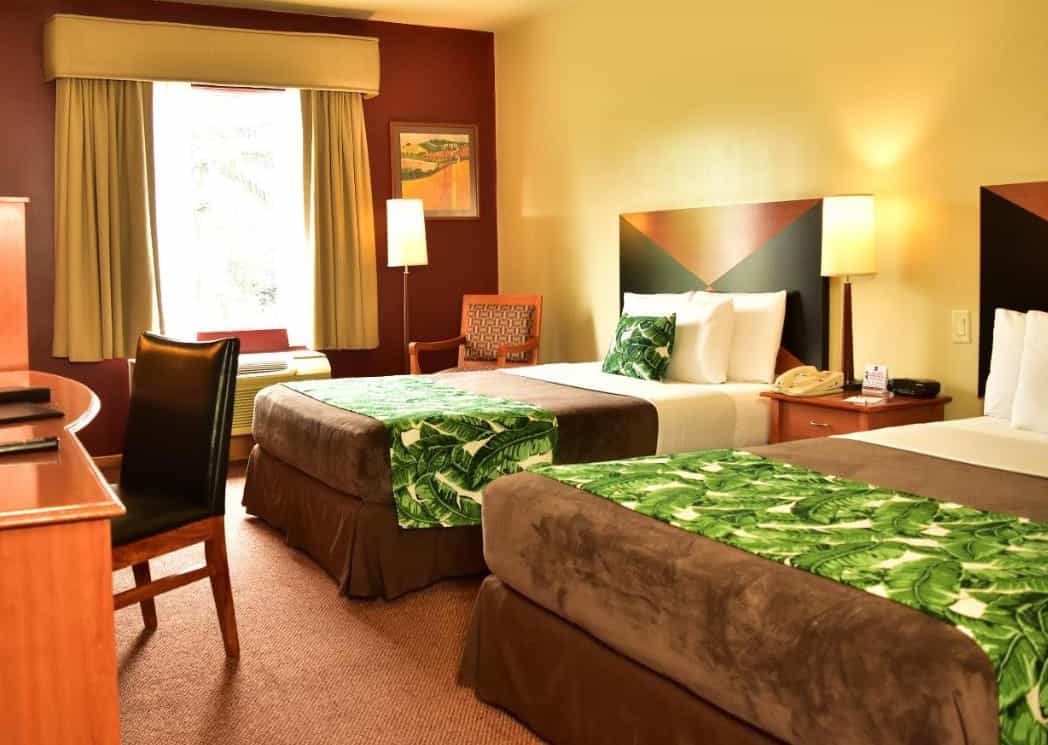
San Jose
You'll stay in a 3-star hotel in the centre of town, for example the Hotel Sleep Inn Paseo Las Damas which is opposite España Park and the Modern Art Museum. The exact hotel will be confirmed by your local host in your pre-departure information.
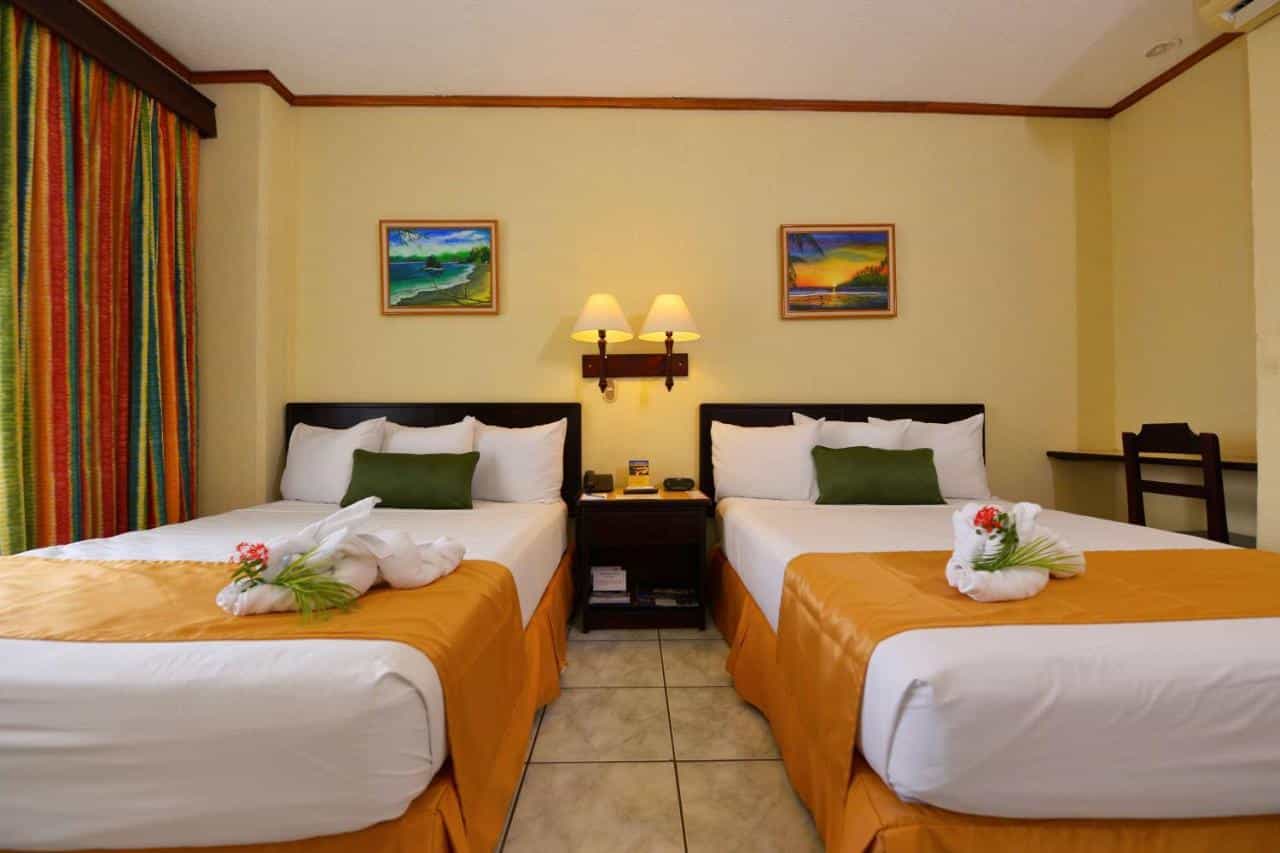
The Pacific Coast
You'll stay at Kamuk Hotel and Spa in Quepos, just minutes from Manuel Antonio National Park and steps from the Pacific Ocean.
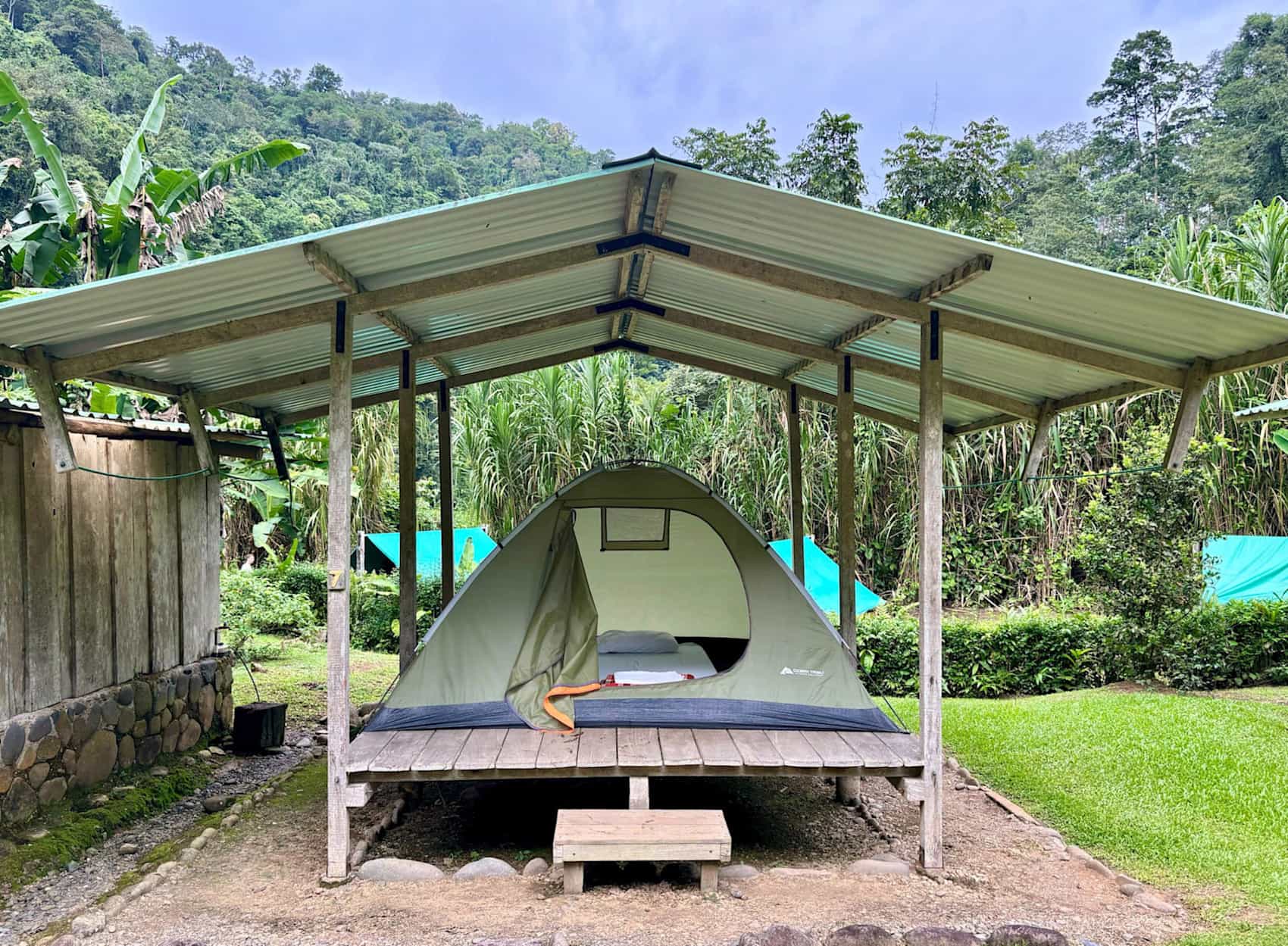
The Expedition
You'll stay at campsites and rustic cabinas. Highlights include El Nido Del Tigre, an authentic Costa Rican camp that’s passionate about sustainability in the Bajo Tigre rainforest.
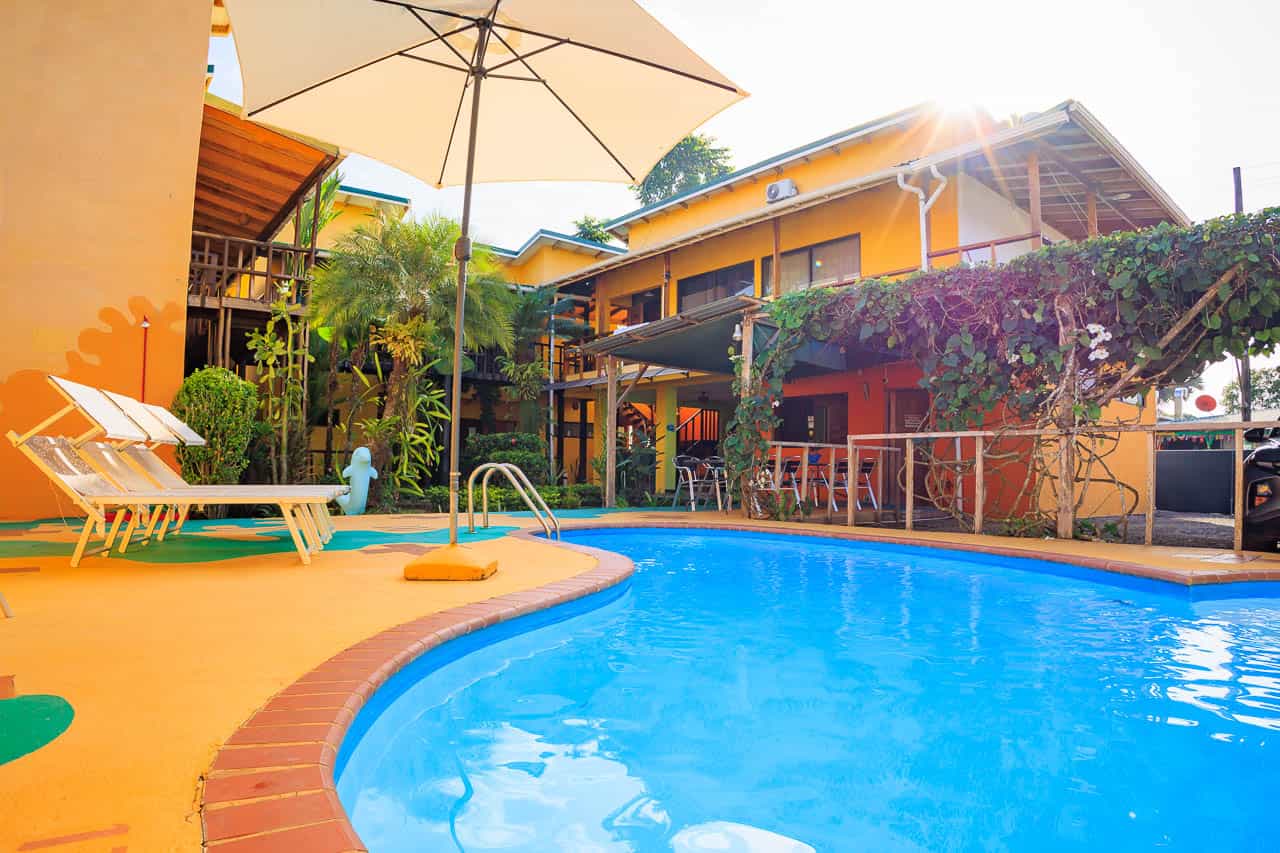
The Caribbean
You'll celebrate the end of your journey with a night at the boutique Hotel Casa de las Flores in Cahuita National Park. The hotel is close to the beach and surrounded by an area renowned for its invaluable biodiversity, where you're likely to see white-faced capuchin monkeys, howler monkeys, iguanas, toucans, sloths and a variety of birds and butterflies.
Upgrades
For solo travellers looking for their own space, an optional private room and tent can be booked for an extra charge, see Optional Extras for the price. Please request this at the time of booking (this is subject to availability).
This trip has been rated as Challenging
Crossing 250km coast-to-coast in 10 days is a challenge, so strong fitness and a sense of adventure is vital. You'll also need to be happy swapping from bike, to hiking boots, to a multi-person raft, to a single person kayak. You do not need kayaking experience although upper body strength is useful. And the mountain biking is not technical so while you do not need to have prior experience of trails etc, the more experience will make your trip more enjoyable. The rafting is from Class II up to Class IIII rapids. No experience is needed for the rafting, your guides will give you a full instruction on how to tackle the rapids as a team, with an experienced rafting guide captaining each raft.
The cycling on the trip is a combination of paved roads and dirt roads going through dry forests, jungles, and cloud forests. Most of the riding is not that technical, your guide will give a heads up on the more difficult parts. Experience in riding back-to-back days is recommended but not absolutely necessary. Most of the days there are climbs as you pass from one valley to the other over the mountains. There is always plenty of time each day to take your time riding and to stop to take pictures etc. You will regroup wherever the guides find it necessary to keep the group together and safe. There will be plenty of local snacks and some shade to keep you going. The ultimate aim of cycling on this trip is simply to be able to see more of Costa Rica combining it with hiking, whitewater rafting, and kayaking.
Some departures of this adventure are run with e-bikes only; see the Dates & Prices section if you'd like to join an e-bike departure.
If I'm joining an e-bike departure, do I need to have experience riding an e-bike? E-bikes are designed to be user-friendly and accessible for all skill levels. However, having some off-road experience and basic bike-handling skills is important, as e-bikes tend to be heavier than regular bikes. It's also helpful to be comfortable riding a variety of trails, including downhill sections, along with managing your balance and making sharp turns, as this will make your experience more enjoyable.
Costa Rica's dry season, considered summer by the locals, runs from mid-November to April and temperatures vary significantly depending on the region and elevation. Along the coast and the Caribbean flatlands, temperatures average 25–34˚C (77–93˚F). At the mid-level elevations temperatures average between 17–26˚C (63–79˚F).
The trip of a lifetime
First of all, thank I want to say thank you soso much to the on site team.
I cannot thank Danny enough - he is the perfect guide for this adventure!! He was so great and motivational - not only is he (evidently!) an accomplished athlete, he is also an expert in ecology and conservation, and as such really knowledgeable to tell us all about the vegetation and wildlife of the country, which was a fantastic addition for a trip like this. Memo and Adolfo from the support team were absolutely fabulous and are also incredible cooks!! Nothing was ever too much to ask, they were all so accommodating and always went the extra mile to ensure everything was perfect and we were all happy and comfortable. The logistics behind an adventure trip like this, which combines so many different activities every day, are evidently very complex and extensive - and yet everything was delivered seamlessly and the itinerary worked perfectly.
Our group of 9 was a fun mix of some solo travellers, some friends, some family, some couples, and we all got along very well! The whole trip is a great bonding experience in itself and there are plenty of chances to hang out and get to know everyone throughout the day and also in the evenings/ at campsites etc.
As far as the fitness level required for the trip, I would definitely say you need to be in good shape to enjoy it (work on your cardio before joining!) as there are some pretty intense long periods of uphill cycling - nevertheless, the team are always happy to adapt to different paces and assist where/when needed, and everyone was able to complete the expedition.
As many other reviews say, the food and snacks are very tasty and plenty - you will never go hungry! We somehow managed to put on weight despite how exercise-intensive this trip is haha.
The kitlist provided on the website is quite comprehensive, we didn't feel we were missing anything. Just to emphasise what other reviews say, clothes will not really dry once wet, so make sure to have dry bags and use the laundry opportunity mid-trip (very reasonably priced). We completed this trip during the rainy season, so sometimes if it was raining we would just re-wear some washed but still damp clothes, and it worked well as the temperatures are warm anyway (don't let the rain put you off the trip, it was actually quite fun!).
Costa Rica is such a beautiful country, all the landscapes are stunning, get ready for many magical waterfall/ river swims (a highlight in my opinion!) and to see so many different animals throughout. The hiking, biking and rafting/kayaking were all incredibly fun, and it is all the better when you are surrounded by such natural beauty. The Nido del Tigre campsite (rest day) is just something else - it felt like our own little oasis in the middle of the jungle. What a privilege to have experienced it all.
Book it, you won't regret it :)
An adventure you shouldn't miss.
An adventure you shouldn't miss. absolutely unforgettable!
14 June 2025 Departure
An absolutely fantastic trip of a lifetime! Our guide Danny was especially brilliant - enthusiastic, knowledgeable, and clearly worked very hard to ensure we all had the best time. Food was much better than expected. Activities were spot on in terms of difficulty/challenge. And Costa Rica was beautiful and full of nature. Strongly recommend!

Outstanding
What an adventure!!! Danny and crew was absolutely amazing, I don’t think they could possibly do a better job . Plenty of knowledge, food and fun !!!
Epic Adventure
Not quite sure I have the words to sum up just how incredible this trip was! In essence a privileged opportunity to traverse across a beautiful country with a fantastic group of people enjoying an array of adventures! Everything was meticulously planned and delivered and every day was so different and special in its own way.
It is a pretty strenuous adventure and you do need a reasonable level of fitness to complete it all but with the support of a great group and positive attitude it is very achievable.
Hotels are all very comfortable and while there are 2 nights of pretty basic camping, the locations really give you a chance to immerse yourself in ‘real’ Costa Rica. The 2 nights camping by the river are in a spectacular location and our time there will always be a favourite memory for me.
Few things I would reinforce for the packing list…cycling gloves, lots of electrolytes, small pillow if you can’t cope for 2 nights without one and ‘water’ shoes. No snacks needed! The food throughout was excellent and always plentiful.
Finally if you are lucky enough to have Josue as your guide and Memo as your support driver then you will have hit the ultimate jackpot with this trip. Genuinely could not have asked for any more from them throughout the whole trip. Such incredible people who put so much time, energy and care into making sure everything was organised and that everyone had a great time.
Truly incredible adventure across Costa Rica
This trip has everything. Incredible scenery, challenging climbs, fantastic guides and support and amazing locations and experiences.
Carlos and Memo looked after our group of 8 from beginning to end - they were incredibly well organised, kind, knowledgeable and above all good fun to spend time with. Every part of the trip was managed to the highest standards, and when adaptions were needed due to injury or other problems they were always up to the task.
There are some challenging cycle climbs on the trip, some hikes in the heat and plenty of opportunities to cool off in waterfalls, rivers and pools along the way. If you're unsure about booking this trip - so long as you have a modicum of fitness you will have the time of your life - stop reading reviews and start booking!





The mighty Coast to Coast Costa Rican Challenge
What an adventure of a life time, 250km powered only by your own lungs, shear will power and some rice and beans obviously!!
The level of detail that has been put in by MBA and the Coast to Coast team creating this one off kind of trip really shows. Before we were transported to the Pacific coast to start the challenge, the support we received to arrange additional high quality activities (Volcano climbing, zip lining and cultural sight seeing) was amazing.
The crossing starts and it means to go on. . . every section has its own challenges; from the monstrous bike climbs up on to the continental divide twice! to the grade 4 rapids, dense jungle footpaths and river crossing. It has something for everyone to excel at and dig deep into your resilience reserves. All whilst enjoying stunning wildlife, scenery, the amazing home cooked food and quirky range of accommodation.
Don't underestimate the challenge part of this trip it's real but achievable with will power and the amazing support of the Coast to Coast staff. Anni managed to have a MTB crash on the first day on a tough loose downhill section resulting in some arm, chest and leg injuries. The staff where outstanding at adapting and supporting her new needs; So she could still make it to the Caribbean coast. Be it the challenges of the heat in high season or the epic rain in the low season, this is a must do trip for the more adventurous active traveller. Its almost impossible not to be impressed with the Jungle Eco lodge on the rest day, the sounds, smells and tranquility recharge the deepest parts of your soul.
An Epic trip with and amazing Coast to Coast team, Jeff, Memo (5* chef) and all the local support people which made this a trip that takes your breathe away whist making amazing memories.
Thank you for being amazing people truly passionate about service deliver not just profit.

Crossing Costa Rica by human power
An amazing trip from the Pacific to the Caribbean, up and over the Continental Divide. An adventure biking and hiking through some of Costa Rica’s remote and quiet trails, with an awesome raft ride to add to the adrenaline thrill. The wildlife and birds are spectacular, the scenery and views are beautiful (once you’ve wiped the sweat out of your eyes), and everyone made us feel so welcome. Our guide and crew were brilliant, informative, supportive - creating fabulous meals and looking after us in every way. Highly recommended to all who like a journey- and a challenge! Pura Vida! 😁🇨🇷
Fantastic journey!
I had a fantastic time on the trip. It was tough, but the guides and support staff were excellent. The whole trip was well organized and executed. Costa Rica and it's people are wonderful.
Prepare for heat, humidity, and mosquitos. The itinerary is challenging, just like the description says. I would recommend bringing a clothesline. Nothing really dries once it's wet, but ventilation helps. Bring a set of gloves for biking, rafting and kayaking. I brought my own comfortable bike seat. Otherwise, the bikes were great and well maintained.


Great trip for adventure seekers!
I highly recommend this trip for adventure seekers or anyone who wants to be pushed beyond conventional hiking tours!
Activities Review: The trip is biking heavy, most of which is up hills or off road biking. There are some more advanced/technical biking sections but can be done by people without prior mountain biking or off road experience. There are 3-4 days which include hiking with only one being a challenge for people who have advanced hiking experiences. The rafting and kayaking is very fun and doable without prior experience. Each day is a fun yet doable challenge for physically fit people.
Guides: Fez and the team are amazing! They will address every concern/question and we’re 100% dedicated to us all trip. They really went out of their way to accommodate everyone during the trip. They are great cooks, helpful during the activities, fun to spend time with, and emphasize safety at all times.
Food: Dining options vary between restaurants in small towns, guides cooking, and camp site specific cooking. The best food was provided by the guides as they really tailored their meals to the travelers. There are ample moments to stop for snacks and the guides ensure no one is hungry or dehydrated. If you have food allergies or preferences, they will accommodate you.
Accommodations: This may be the “hardest” part of the trip as some of the camp sites are a bit rough. There are many nights without hot water or air conditioning. There will be a few nights when you are sleeping in a tent on the ground. After 2 days, the hot water won’t matter as much since it’s hot and humid during the day, but the temperature and humidity may make sleeping harder at night. There will also be bugs and wildlife at these camp sites. Some travelers may be less comfortable with this.
Tips:
- Bring a fan if you can. This will help in the tents.
- Bring a lot of sun block and deet. You will sweat it off often and will need to re-apply.
- Physically prepare in advance. If you train accordingly, you won’t be sore after any of the activities.
- Everything will be wet/damp once worn. This is due to sweat, humidity, and rain. This includes shoes.
- There are 2 chances to do laundry. One is about half way and the other at the end. Plan to do laundry. This will help with packing.
- Hand washed items won’t usually dry. Prepare to wear damp yet clean clothing or re-wear dirtier items as needed. If you don’t want to do either, bring a few extra items to carry you to laundry day.
- You will have a few days without phone signal or WiFi. Enjoy these days but plan ahead. Bring a book or games for the rest day as there is no signal.
- It is very hot, no need to bring heavy coats or cool weather clothing. However, long sleeved items will be good sun protection.
- Bring at least 1 pair of biking pants. Your own helmet is recommended but not needed as they can provide one. However, it is nice to have your own.
TLDR: This is a fantastic trip for adventure/challenge seekers! The guides are fabulous and really go out of their way to ensure a fun yet safe trip.
Just amazing…
Wow… what an adventure. My husband and I were so lucky to join such a fab group of people and to have had the amazing guides Fez, Josue and Geoffrey. It was an experience of a lifetime, tough at times but with encouragement from everyone, great fun. Advise- do some training it is physically tiring. I took a camel pack with me and was so pleased I did- nothing can prepare you for the heat. Bring a blow up pillow. Food, wow there was plenty of it and soo tasty. Snacks were abundant and again just what we needed. The whole ‘holiday’ was a once in a lifetime experience something we will struggle to replicate from the scenery, company and guides. We loved seeing the less touristy Costa Rica,it is a beautiful country. A big thanks to everyone who took part in our adventure.


An epic adventure
Struggling to put this one into words. A first for me setting out solo on a group tour with muchbetteradventures and the trip exceeded all my expectations.
Crossing the length of Costa Rica, hiking, cycling, rafting and kayaking through some stunning landscape is something I’ll never be able to replicate. To say this has been one of the most challenging physical experiences I’ve faced is an understatement. There were moments where I wondered what on earth I’d signed up to and what I was doing after such a relentless and exhausting period at work. Yet it was all worth it. Our guides Fez, Josue and Geoffrey were simply incredible showing us their beautiful country and the real Costa Rica… not to mention the food!!! Of course I couldn’t have done this all solo… I’m lucky to have been part of such a diverse, inspiring group of travellers of all different backgrounds, ages and life experiences. Feel truly blessed to have done this with them- a big, happy family for the past two weeks, supporting each other every single day even in the really tough moments. Memories and moments that will stay with me for a long time. This trip came just at the right time and it’s taught me what I’m capabale of and how much resilience I have both mentally and physically 🙏 I’m not quite sure any future trip will quite compare . .
Loved it from start to finish
Travelling home from this amazing adventure. We were a group of 16, all fit, ages ranging from 30s to 60s, and 10 were solo travellers. By day 2 we were like old friends and helping each other over the bits we each found hardest - and it’s fair to say that everyone had strengths and weaknesses. It was an eventful trip with some genuinely challenging moments (heat exhaustion, cycling somersaults, animal attacks and extreme river crossings trying to sweep us away).
We were lucky enough to have Fez, Josue and Jefry as guides. The whole crew was flawless and adapted well to the unexpected.
We all obsessed over the advice given by previous travellers so here’s some additional from me:
It rains, you will get wet often…. and drying anything is almost impossible with the humidity. Bring 2 sets swim gear, quick dry everything including shoes, and a washing line. The laundry option midway and at the end is popular!
I brought a pillow case and made my own pillow.
We all laughed at, then envied one in our party with an umbrella (for the night-time loo trips!)
Bring a way to carry small stuff on a bike - you don’t want to cycle with a backpack up those hills in that heat. I used a saddle bag, others used bum bags. The bikes have 2 bottle holders.
If you care about gadgets you’ll want a power bank / solar charger for the 2 days by the river.
Consider extending your trip - I stayed in Puerto Viejo for a few days exploring the caribbean side and recovering.
Book it!
Fantastic experience!
Tough, demanding, challenging, but what an experience! Through baking hot sunshine and torrential rain we battled across CR. It was great to meet so many like minded people across the age spectrum and we helped each other through our highs and lows. Our guides and support team were exceptional, nothing was too much trouble and there knowledge of the terrain was excellent. Each night they managed to produce a fantastic meal with fresh ingredients. You do need a decent level of fitness to complete this challenge, but this beautiful country will make it all worthwhile. Thank you MBA.
What an incredible adventure! Be prepared for a challenge!
If you have an appetite for adventure, enjoy wildlife and the outdoors and have a decent level of fitness then don’t hesitate and book this trip, it’s fantastic! The trip was so well organised from start to finish. There were a lot of logistics involved with multiple activities on the same day and moving equipment and luggage around for transitions, camping etc but this was all done completely seamlessly and made our lives very easy so that we could just focus on having fun and enjoying the holiday. Thank you so much to Memo and Vito who made that happen for us. Our guides Danny and Carlos were both absolutely brilliant, engaging, knowledgable and made sure we were well looked after throughout. They really did a great job of balancing the different ability levels at different points and making sure that everyone was able to complete the trip without setting foot in a vehicle. They were clearly so passionate about the environment and wildlife and that really came across. The itinerary was action packed so do not underestimate the level of fitness required to complete this with several hours of hiking/ cycling/ rafting/ kayaking each day, quite a few early starts and some camping! That aside, what a way to experience the scenery and the wildlife and everything this beautiful country has to offer. We had a brilliant group so lots of laughs from start to finish. The food was generally very good. My highlight was probably rafting on the Pacuare river and seeing a sloth!
What an amazing Challenge and Country
16 strangers become 1 team thanks to this adventure, challenging, interesting, the Guides were amazing and nothing too much trouble (Fez, Josue and Geffory in particular).



Costa Rica coast to coast - A must!
This was truly one of the most incredible experiences of my life. If you’re fit, adventurous, and looking for a challenge, don’t hesitate—just book it!
Exceptional Guides & Seamless Organization
The guides and support team were outstanding. Not only were they incredibly fit and knowledgeable, but they were also fantastic chefs and genuinely kind, supportive people. Every aspect of the trip was seamless—this team has everything down to a fine art!
Challenging Yet Rewarding
The uphill climbs were tough, and on particularly demanding days, the team was incredibly supportive, taking my bike onto the support vehicle when needed while I ran or walked. They ensured safety by spreading out from front to back and regularly providing water and food. The “challenging” rating is spot on, so I’d strongly recommend having solid bike fitness, especially for hills.
Packing & Preparation Tips
The provided kit list was very accurate, but here are a few extras I found invaluable: • A CamelBak backpack for easy hydration while hiking. • Electrolytes to stay hydrated, especially in the heat. • A travel pillow—a must for the camping nights. • A small bike bag for essentials like a phone, tissues, and snacks. • Blister plasters—a lifesaver!
The People Make the Trip
Our group of 12 was a mix of solo travelers and friends, and they truly made the experience unforgettable. They were there to support each other through the tough moments and to share the incredible highs of the adventure.
Final Thoughts
The sense of achievement, breathtaking views, and amazing memories made this adventure worth every penny. If you’re up for a challenge and ready to embrace the unexpected, I highly recommend this trip!



Easily the best trip of lifetime!
This was easily the best trip of my life, and I’ve been to a quite a number of countries before.
Costa Rica is amazing with its views, wildlife, climate, beautiful beaches and forests, mountains etc. It was all amazing! If you are thinking about booking this trip, please do so, you will thank me later!
I’ll try to make this review more factual and useful as much as I can:
- Difficulty - when MBA says its “challenging” it is somewhat difficult to understand what that means. I am a 34 old male, and I considered myself fit before this trip :) but let me tell you the trip is more difficult than it looks. DO NOT UNDERESTIMATE the biking bits, especially the uphills, and as our lovely guides told us - all Costa Rica is uphill! :) To be fair it was quite challenging for me especially because of difficulties with the arrival flights so I did not have time to rest before the start. Days 1-2-3 are difficult due to extreme heat (we went in dry season so rain was not an issue) but it was around 30-32 degrees on most days with around 60-80% humidity, which takes its toll on you when you need to hike/bike 14-15 kilometres straight uphill.
The downhill sections are no joke either, as you will be riding some technical slopes, offroad, covered in gravel and uneven ground which makes breaking on a bike almost impossible (you skid as soon as you try to break) so the only option is to go with the flow. We all managed to do it (with couple minor falls here and there but nothing dramatic), but this is something that I would like to have known in advance. ALWAYS wear your biking gloves, they may save your palms one day.
-
Gear - the kit-list is pretty much good enough. Couple comments from my side are that a) a camping pillow is a must; b) trekking poles were super useful! Some people who did not bring theirs ended up needing some anyway so we had to improvise; c) consider bringing a camping hammock. Its not necessary but if the weather is good you may prefer to sleep in a hammock vs a tent where the ground isn’t always soft if I put it mildly. Otherwise everything else is on spot. And DO BRING WATERSHOES, I bought mine off amazon for like 20£ and they came in super useful during the water parts. Do bring 2 or better 3 water bottles. Mostly you will not need them, but there are certain sections where the support vehicle will not be available and you will need to carry 4-5 hours’ worth of water with you. Good tracking boots and super useful too as there are many rocky areas.
-
Food and accommodation - I put these two together as both were totally fine. The food was quite good. I would not say it was super amazing as many other reviewers have said, but overall it was quite good. 7-8 out of 10.
-
Itinerary is excellent. You get to see the country like nobody else and no other tour or touristic experience comes even close to this one (trust me, we met a lot of other groups and all of them were envious of us :) ). You get to see the whole country, starting from Pacific, ending with Caribbean. You get to experience how the nature changes as you keep going from one climatic zone to another, from lowlands to rainforests, then to cloud forests, jungles, waterways, canyons and so much more. The camp in the middle of the trip where you have a rest day - El Nido del Tigre - is just a gem in the forrest. I would have stayed there for another week if I could, beautiful place, simply wonderful. The accommodation gets better and better as you go through your trip.
-
Value for money - originally when I was booking the trip, I had an impression that this was a slightly on the costlier side, but overall I was still happy with the price. Now having gone through the whole thing, I can honestly say that this trip has a great value for money. The amount of equipment and experiences that is included is simply staggering. I would probably need to spend at least another couple thousand just to be able to do the same. Just the renting price of bikes, rafts, kayaks, tents, plus all the accommodation, personal guides, food, entry permits, transfers etc. The value is really good, cannot complain about this.
-
Group dynamics - was excellent. I don’t know whether it was us who got lucky (but many other reviewers are saying the same) our group was simply excellent. All different people from various age groups, different genders, different interests, but we all got together as a team. Going through the challenges and difficulties together really is a bonding experience and we all became friends by the end of our journey. There were some tears during the goodbyes.
This trip will stay with me forever - a core memory formed. Although we spent only 2 weeks, if feels like it was a 1. 5 month long journey just based on the amount of experiences and excitements that we got. It feels like I had a wide smile on my face during the whole 2 weeks!
You get to see wonders on this trip, challenge yourself physically as well as mentally, and I am not going to lie on some days it will feel like it was a wrong decision to go there, but once you overcome the difficulties you will be the proudest person on earth. Every evening we thought that we could not go another day, but waking up in the mornings in the middle of the jungle, listening to various birds sing while sipping freshly roasted Costa Rican coffee feels you with a sense of adventure like nothing else!
Just give yourself a break and book this amazing and life-changing adventure, you deserve this!
Coast to coast
For the amount of logistics involved in this trip Dani and the boys at coast to coast have it down to a fine art. Well organized and Dani is a wealth of knowledge when it comes to all things environment related. Highly recommended
What an adventure!!
Wow! I had the most amazing time. Cycling up mountains, descents on gravel, hiking up hills and through the rainforest and rafting from campsite to campsite. The food, campsites and activities were all first class. The guides were outstanding and the group were fantastic! I loved every minute of it, even the very tough kayaking at the end. I saw sloths, frogs, raccoons, tarantulas, toucans, turtles and howler monkeys. Would definitely recommend this trip!!



Utterly Brilliant
This trip is superb! It really does have it all. The guides are top draw (Daniel and Carlos especially), the sights were breathtaking, the logistics were seamless, the food is excellent and the help provided when needed from the whole support team was perfect. It wasn’t just a holiday, it was an adventure, an achievement and a way to make some great new friends. The description of ‘challenging’ is accurate. Some long cycling climbs, steep hiking and tough kayaking so it is tough but well worth it. Don’t hesitate - get it booked.
Trip of a lifetime
This coast to coast Costa Rican adventure exceeded all expectations. It is physically (and mentally at times) challenging but so worth the effort, whether cycling up those “undulations” or walking uphill first thing in the morning. It gave us such a sense of achievement and it was a real confidence boost for me (as a 65 year old granny!) to know that I could do it. The heat and humidity is something to factor in (and it’s impossible to train in this kind of heat in the UK in winter) but there are plenty of opportunities to stop, take in the view and refuel with snacks and water. And there’s no doubt we all felt fitter as the days went by.
The landscapes are beautiful, from coffee & banana plantations to lush rainforest, with sugar cane and pineapple plantations as we headed towards the Caribbean coast. Cooling off in the numerous waterfalls was a particular highlight for me, just so unexpected and exhilarating!
The accommodation is perfectly pitched, with a few nights in hotels, some indoor camp sites with showers (or better still a swim in the river) and then the very comfortable glamping site at El Nido del Tigre for 2 nights which is just fabulous.
As has been mentioned in all the reviews, the food is delicious and plentiful, cooked from scratch by the incredible team (in our case Memo, Erik and Josue)…honestly they are all so talented and creative - the freshest fruit & pancakes for breakfast, crispy plantain chips for pre-dinner snacks and everything in between.
Josue, Memo and Erik ensured our trip went smoothly and any bike issues were dealt with promptly. Josue, our lead guide, was just fantastic, very empathetic, kind and with a great sense of humour. He ensured we were safe at all times (some of the downhill off road sections do require extra concentration).
All in all it was an incredible experience and one I’ll never forget. And a massive shout out to our brilliant group, who absolutely made the trip so enjoyable & such an unforgettable experience.
Pura Vida!






100% Worth it
1st class and awesome and within a day of finishing your last bike or hike you'll have thought you dreamed the whole thing.
We were all strangers bar 2. Mostly in 30s. I am 56 and definitely the least fit of the group. . . and I made it. A really fabulous experience. Don't dither, just do it. Everyone got on so well. Group holidays are not my normal go-to thing and this trip converted me.
The food is fabulous. Josue is wonderful. He's kind caring intelligent and unbelievably hard working. If you thought you were tired at the end of the day, he did it too and then he makes sure everyone is happy and cooks you dinner and is the last to bed. Memo and Eric are equally caring and lovely. When doubtful of the distances I often cross referenced with Memo and preferred his version !
A small glossary of terms. . . Undulating doesn't mean what it says in a dictionary. It means it is either uphill or very uphill. There is little down hill about it.
There are some fabulous downhill off road biking sections for thrill seekers.
Drink lots of water each day starting with 1 lt during the night before bfast. I amazed myself drinking about 7lts a day.
Don't underestimate what you're doing, nor the effect of the heat. It's damn hot, especially the small sections hiking on tarmac .
Any idiot can be uncomfortable and people do this trip at all ages and stages but it's not a cop-out to ask Memo to drop you at the top of the 3km steep hill climb. Any idiot can take a bike for a hike. And Josue and Memo are really kind and supporting. They can see what you are capable of and, they will encourage you to see the whole thing through but they will also be v supportive if you need a few bits of help.
The end arrival in the Caribbean is in a v underwhelming place but is fabulous. The motor boat ride immediately after is awesome and the town of Cahuita chilled, with a lovely long beach and national park.
I was strongly tempted to stay in Canuita a day or 2 longer. The beach is lovely and the vibe is kind. However, I flew straight back to the UK. If u stay, make sure to book your bus to return to San Jose. . . . they get full. Others went to the Pacific coast for a few days. Whale watching, turtle releasing, quad biking. It's a fab country .
The start is in Quepos and it's suggested you go to the National park for the day. As a group of strangers we immediately bonded by taking a sunset boat trip with cocktails instead. . . oh how we laughed ! Great start.
And I could go on and on. . . . just brilliant.
Further to MBA suggestions. Things to bring 1 padded bike seat cover 2 x padded shorts A peak visor to go under your bike helmet if your helmet doesn't have a visor Re-hydrant tablets Blister Compede plasters Water shoes Shared hotel rooms are fine but ask for your own tent. . . you'll be glad of it.
Things not to bring. . . Pedals - pointless given how much off-road there is. Bike seat - just bring a squidgy seat cover. Snacks . . . you will never go hungry


It doesn’t get “much better” than this.
From start to finish this was a seamless and professional trip - fantastic guide (thanks Fez), superb itinerary and definitely challenging in all the right places 😁.
Yes I would do it again!!
Although the elevation and bike climbs were a killer to me, I would consider an ebike and do this all over again! Our guide Fez was a Beast and super attentive to me even though i was so slow. I am already recruiting a group to go back. The food was awesome, waaay better than what i thought you could get while camping.

Just amazing 🤩
I had the best time in Costa Rica with MBA. Everything was flawless : our host Rosa, Fez and the support team and the group of lovely and inspiring people that I traveled with. This trip was the perfect amount of challenging and rewarding. Be prepared for a few steep uphills, both hiking and cycling but the views are worth the effort and the group is always supportive. Water shoes are a must and a trek pillow for the camping is strongly advised. No need to pack ton of snacks because the food is really good and nutritious (homemade empanadas at the campsite were delicious! 😋) This trip deserves 5 stars and more!

Costa Rica Coast to Coast
Honestly a trip of a lifetime. So well organised. Made even more incredible as our guide Dani, his daughter Zoe and Mau were amazing. Can’t recommend enough. One of my all time favourite countries and a group of great people to share the memories and experiences with.
Amazing experience, thanks to our guide Fez and his team!
Wow, wow, wow! What an amazing country - and such friendly locals! Absolutely loved this trip. A challenging one, with some pretty tough climbs on foot and cycle, but there was no better way to really bond the group, and the guides were so fantastic, we always knew we were in safe hands and they went the extra mile to make it a great experience for everyone. Thoroughly recommend this trip, but don’t underestimate the fitness levels required if you want to really enjoy it!


WOW!
The word for this latest adventure might have to be wow…. Wow for the incredible beauty of Costa Rica. Wow for the amazing food - plantains, rice and beans galore. Wow for the incredible guides - every detail of biking, hiking, rafting and kayaking was executed flawlessly. And a final WOW for the difficulty. Every day was a challenge, but day three was particularly difficult when biking over the continental divide. Sound fun? It was!!! I’d turn around and do it all again tomorrow! This was an A+ trip - made A+++ by the absolutely amazing guides. a HUGE shoutout to Christopher (aka Fez) for the great food, abundant laughs, and continuous encouragement. Pura Vita!!!



Absolutely fantastic and flawless execution, 1000% recommend!
Was my first trip travelling in a tour and didn't know anyone going so was a bit nervous - but no need to be!! Everyone was so easy to get on with, and you can take the tough days at your own pace (e. g. faster people have longer breaks but not rushing others, or on the big bike day they start later). The elevation at the start of the trip is no joke but it's a great accomplishment and you're with lots of fun like minded people from a wide range of ages. Would highly recommend, you get to see Costa Rica very differently to most tourists! If you want to do this to lose weight though, the food is very yummy and lots of it, so you won't get that outcome! Fez was an amazing guide, if you get him you're in for a treat!! :)
Itinerary Activities
- Guided hiking, cycling, rafting and kayaking expedition across Costa Rica over six days
- Rest day on Day 8
Guides
- Expert, local, English-speaking guides
Accommodation
- 2 nights in a centrally located hotel in San José
- 1 night in a simple hotel in Quepos
- 7 nights camping at campsites and rustic cabinas
- 1 night in a boutique hotel in Cahuita National Park
Meals
- All (11) tasty breakfasts
- 8 hearty lunches
- 7 traditional Costa Rican dinners
Transfers
- Arrival transfer from San José Airport at any time on Day 1
- Departure transfer to San José Airport at any time on Day 12
- All transfers during the trip
Equipment
- All biking equipment
- E-Bike only departures: Cannondale Trail Neo 4 E-bike (frame size medium & large) or Specialized Tero 3 E-bike (frame size small & extra large)
- All rafting equipment
- All kayaking equipment
- Tent, sleeping bag, and sleeping mats for the camping nights
Permits
- All permits and entry fees
Our trips are hassle-free by design. We include all the activities and equipment, as well as many of the meals, so you can simply rock up with your rucksack and share the adventure with your new pals.
Travel to and from the trip
Our trips do not include flights, trains or other travel to the start point and back from the end point.
Tips
Tips are not included in the trip cost. These are entirely at your discretion; however, as a guideline we recommend budgeting the following:
- $8-10 (USD) per person, per day for the expedition leader
- $6-8 (USD) for support staff
Of course, you are free to tip as much or little as you like and the amount should be reflective of your perception of service and quality - a tip is not compulsory and should only be given when you receive excellent service.
Travel insurance
Travel insurance is compulsory for all of our adventures and you are required to provide your policy information before departing. Your insurance should include adequate protection for overseas medical treatment, evacuation/repatriation, your baggage and equipment and the specific activities involved on your adventure. We also strongly recommend it includes cancellation and curtailment insurance, should you be unable to join your trip for specific reasons such as illness. Our recommended travel insurance provider is Campbell Irvine, as their insurance offers all of the above.
Visas
Visa requirements often change, and you are responsible for obtaining any required visas for this trip. Please check with your nearest embassy or consulate for up-to-date advice.
Personal Expenses
You know your own spending habits best, so please budget an appropriate amount for things like optional meals and drinks, shopping, optional activities, and laundry.
What's included?
- All your kayak, rafting and cycling gear (except for biking helmet)
- All season sleeping bag
- Sleeping mat
What's available to hire?
- Bike helmet (for your own comfort we advise bringing your own if you can)
What do I need to bring?
SLEEPING
- Sleeping bag liner (optional)
BAGS
- Soft overnight duffel bag or rucksack
- Daypack (25+ litres)
- Daypack rain cover
- Dry bag (optional)
FOOTWEAR
- Lightweight adventure shoes or hiking boots (worn-in)
- Sandals with SNUG straps (Teva type)
- Lightweight fast drying hiking socks
CLOTHES
- Lightweight rain jacket and rain pants (Gortex, nylon or similar)
- Lightweight comfortable pants
- Shorts/skirts (quick dry)
- Medium weight wool or fleece jacket
- Shirts (poly-pro outer wear (for quick drying)
- Short sleeved and light-coloured long sleeved tops, for sun protection
- (Thermal) underwear
- Fast drying hiking socks
- Buff or bandana
- Sunhat (ideally with brim)
- Something to sleep in
- Swimwear
- Towel
- Sarong (optional, works as towel or quick cover-up)
BIKING GEAR
- Bike helmet
- Trainers or specific cycling shoes (for flat pedals, unless you bring your own clip in pedals)
- Bike shirts (optional)
- Bike gloves (can also be used for paddling)
- Padded shorts for cycling segments
- Bike water bottle
Note: feel free to bring your own pedals and seat if you want.
OTHER
- Trekking poles (optional)
- Sunglasses (UVA + UVB resistant) & keeper strap (you don't want to lose your sunnies in the river)
- Headtorch or torch
- Spare batteries (camera, torch, etc)
- 2-3 reusable water bottles
- Prescription glasses or contacts (bring an extra pair)
- Passports (visas and copy of your passport)
- Travel insurance documents
- Insect repellent
- Waterproof sunscreen, 30+ SPF
- Earplugs
- Padlock for left luggage
- Universal travel adapter
- Power bank or solar charger
- Personal first-aid kit (inc. blister treatment)
- Personal items (biodegradable toiletries, sanitary wear etc)
- Alcohol hand-gel
Bike Helmet Hire
Payable Before Departure
Bike Helmet Hire
…
Pre/Post trip accommodation in San Jose (per room, per night) from
Payable Before Departure
Pre/Post trip accommodation in San Jose (per room, per night) from
…
Optional Private Room & Tent Upgrade, seasonal from
Payable Before Departure
Optional Private Room & Tent Upgrade, seasonal from
… Per person
Airport Transfer One Way (San Jose Airport to San Jose accommodation) from
Payable Before Departure
Airport Transfer One Way (San Jose Airport to San Jose accommodation) from
…
We partner with the World Land Trust to ensure this trip achieves Net-Zero emissions. We also support their Buy an Acre programme, helping local communities to buy and protect natural habitats in perpetuity.
What's the number?
It works out on average at 147kg of CO2 emissions per person, including all local transport, accommodation, food, activities, guides, staff and office operations.
The only thing it doesn’t include right now is flights and travel to the destination. We do make an overall estimate across all our customers separately, but as we don’t book flights, have customers from all corners of the world, and no way of reliably knowing their travel plans, we simply can’t include an individual number in the figure on display here. We’ve got a goal to fix that, so that when you book, there is a way to measure and mitigate the carbon emitted by your flight too.
But what does the number mean?
Yep, hard to picture eh? To give you an idea:
- Driving 1000 miles/1609km would be approximately 281kg of CO2 in an average car (or 140.5kg per person, if there were two of you in it).
- A return economy class flight between London and New York would be approximately 1619kg (1.66 tonnes) per person.
- 10 trees in a temperate forest are estimated to remove approximately 250kg of CO2 from the air in a period of 5-10 years.
What are we doing about it?
Our trips are relatively low-carbon by design, and we're working with all our hosts to develop long term carbon reduction plans. We partner with the World Land Trust to ensure this trip achieves Net-Zero emissions. We also support their Buy an Acre programme, helping local communities to buy and protect natural habitats in perpetuity, ensuring the protection of the reserve and its wildlife.
Want to know more?
Amazingly, no international travel company has ever publicly published their carbon measurements before, as far as we know. We believe that must change, quickly. So we’re openly sharing the method we used in the hope that other companies will be able to more easily follow suit and build on what we've done so far. You'll find it all here.
You start your daily activities in the morning. Your guide sets the pace that can be kept up by the entire group, and there will be breaks for water, pictures etc. You stop for lunch and finish the activities in the afternoon, to allow plenty of time to rest before dinner and the daily briefing. When you finish a section – rafting, hiking, kayaking etc, the support vehicle will be strategically waiting ready with your next equipment. Everything is organised and supported so that you simply need to power yourself from coast to coast, rather than think about the logistics. While the guides do encourage and support everyone on the trip to complete the expedition successfully without using motorized transport, if you are unable to complete any section for any reason, transport can be arranged to skip you through to the next stage.
The bikes used will be front suspension mountain bikes with disk brakes. You are welcome to bring your own pedals, seats and accessories, although it's also perfectly fine to just turn up with comfortable active shoes and start riding.
E-Bike departures: You’ll be riding a Cannondale Trail Neo 4 or Specialized Tero 3, both high-performance aluminum framed e-bikes designed for a variety of terrains, from smooth roads to trails. These bikes are equipped with a Turbo Full Power 2.0E Motor for excellent power on climbs and descents, and 500W/h batteries for long-lasting rides. Each bike comes with a mounted LCD digital display for easy tracking of speed, distance, and battery status.
If joining an e-bike only departure, your e-bike will assist with about 25% of the effort on an average ride, meaning you'll provide about 75% of the effort. There will be moments when you'll need to switch to Boost mode for short bursts of power, especially on challenging terrain or steep sections. However, most of your ride will be in Eco and Trail modes, with Eco mode often being your go-to on climbs to conserve battery life throughout the day. This balance ensures a smooth, enjoyable ride while still giving you the thrill of exploration on two wheels.
In terms of speed, the power assistance on e-bikes is typically capped at around 25kph (15mph). If you want to go faster, you'll need to pedal harder! You can adjust the power levels to match your pace and terrain. Your cycling guide will brief you on how to use the different modes to optimise your ride and make the battery last:
Eco Mode: Low power for energy efficiency, giving you longer battery life on flat terrain.
Auto Mode: Automatically adjusts the power based on terrain and your pedalling effort for a more balanced ride.
Sport Mode: Provides mid-range power, ideal for moderate hills and faster cruising.
Turbo Mode: Delivers maximum power, perfect for steep hills or when you want to ride fast.
When it comes to battery power, the e-bike batteries are typically charged overnight, usually at your accommodation. There will be a couple of spare batteries in the support vehicle just in case. However, if you manage your battery usage throughout the day (for example, by avoiding using turbo mode all the time), you’ll find that the battery lasts long enough for most rides without any issues.
You will be paddling in double sit-on-top kayaks of the brand 'Ocean Kayak'. If you are an experienced kayaker and wish to use a single, please discuss with your host, as they have a limited number available.
The expedition has a support vehicle that transfers all luggage and equipment from stage to stage. You just need to carry a day pack with water, snacks, camera, waterproof jacket etc.
The water in Costa Rica is generally safe to drink except for that found in remote and rural areas where there's little to no infrastructure. The support vehicle carries large containers of water from which you can fill your bottle at the start of each stage. There will also be drinking water available at each night’s accommodation.
This trip visits locations at or above 2500m, where some people may experience symptoms of Altitude Sickness, also known as Acute Mountain Sickness (AMS).
Previous experience at altitude doesn’t guarantee the same response again – your body can react differently on each trip. However, having been at altitude before is still valuable: it gives you a better understanding of how your body might respond, what symptoms to look out for, and how to manage your pace and energy levels.
Your guide is trained to manage the risk of altitude sickness by controlling the rate of ascent, monitoring group wellbeing, and responding appropriately if anyone feels unwell.
Before booking, we recommend considering your personal health, particularly if you have any pre-existing conditions, and consulting a medical professional if you’re unsure. Arriving early to allow your body to acclimatise can also make a big difference.
Your travel insurance must cover the maximum altitude reached on this trip and include emergency evacuation.
This trip takes place in environments where wild animals are present in their natural environment, where protections and controls on their movement may be limited or non-existent. Some species may be dangerous, venomous, or unpredictable. Sightings are a privilege, but safety is key. Always follow your guide’s instructions and any posted signage.
We recommend considering your comfort around wildlife and discussing any concerns with your host before travel, particularly if you have allergies, phobias, or related health conditions.
This trip operates in areas where daytime temperatures can reach extreme highs, where limited shade and high humidity can also be a factor. These conditions can affect physical performance and increase the risk of dehydration or heat-related illness. Your guide will adjust the pace and monitor the group closely, but hydration, proper clothing, and sun protection are essential.
Before travelling, consider your ability to be active in high temperatures and consult a medical professional if you have concerns, especially if you have any cardiovascular or heat-sensitive conditions. Arriving a day or two prior to the trip may help you adjust gradually to the heat.
Sure can! Over 70% of our travellers travel solo, it’s a great way to meet like-minded people.
Our team of Adventure Hunters co-create exclusive adventures which are run by highly vetted, specialist hosts. The trip is run by our trusted host partner in the destination. We only work with independent, local, in-destination experts who know the very best places to explore and how to stay safe. Read more information about the local teams we partner with. You’ll be introduced to the host straight after making a booking via the Much Better Adventures platform.
Much Better Adventures refer to the UK Government’s official travel advice when designing trips and monitoring trip operations. We recommend that all customers are familiar with the practical information provided on the Government’s FCDO website, where current travel advice can be found by searching for the applicable destination(s).
For customers joining this trip from other international destinations – please also read the official travel advice applicable to your country of residence/origin, as this may differ.
We recommend checking out the country-specific information and also talking to a travel nurse.
We automatically convert prices from the local currency that a host receives to your chosen currency. We update our exchange rates on a daily basis so this does mean that prices displayed on the site are subject to currency fluctuations, which is why you may see them change over time.
If you wish to change the currency you pay in, head to the bottom of the page.
All of our group adventures are specially designed for adults to enjoy as we want these adventures to bring together outdoorsy people who are truly like-minded. You must be over 18 to join one of our trips.
You're always in good company on one of our adventures.
Our trips are typically made up of a mixture of solo travellers and small groups of 2 or 3 friends, with most in their 30s-50s.
Our sociable adventures are solo-friendly by design and naturally attract outdoorsy people with a shared mindset; a love for adventure, a desire to push themselves and meet awesome, like-minded people along the way.
It’s this camaraderie that has so often turned a great adventure into a life-changing one.
Don't just take our word for it:
- 95% of people rate the group dynamics on our trips 5/5
- 90% of people recommend joining a trip to make new friends
- 75% of people have met people on our trips that they would now consider friends
See here for more info about the Much Better Adventures tribe.
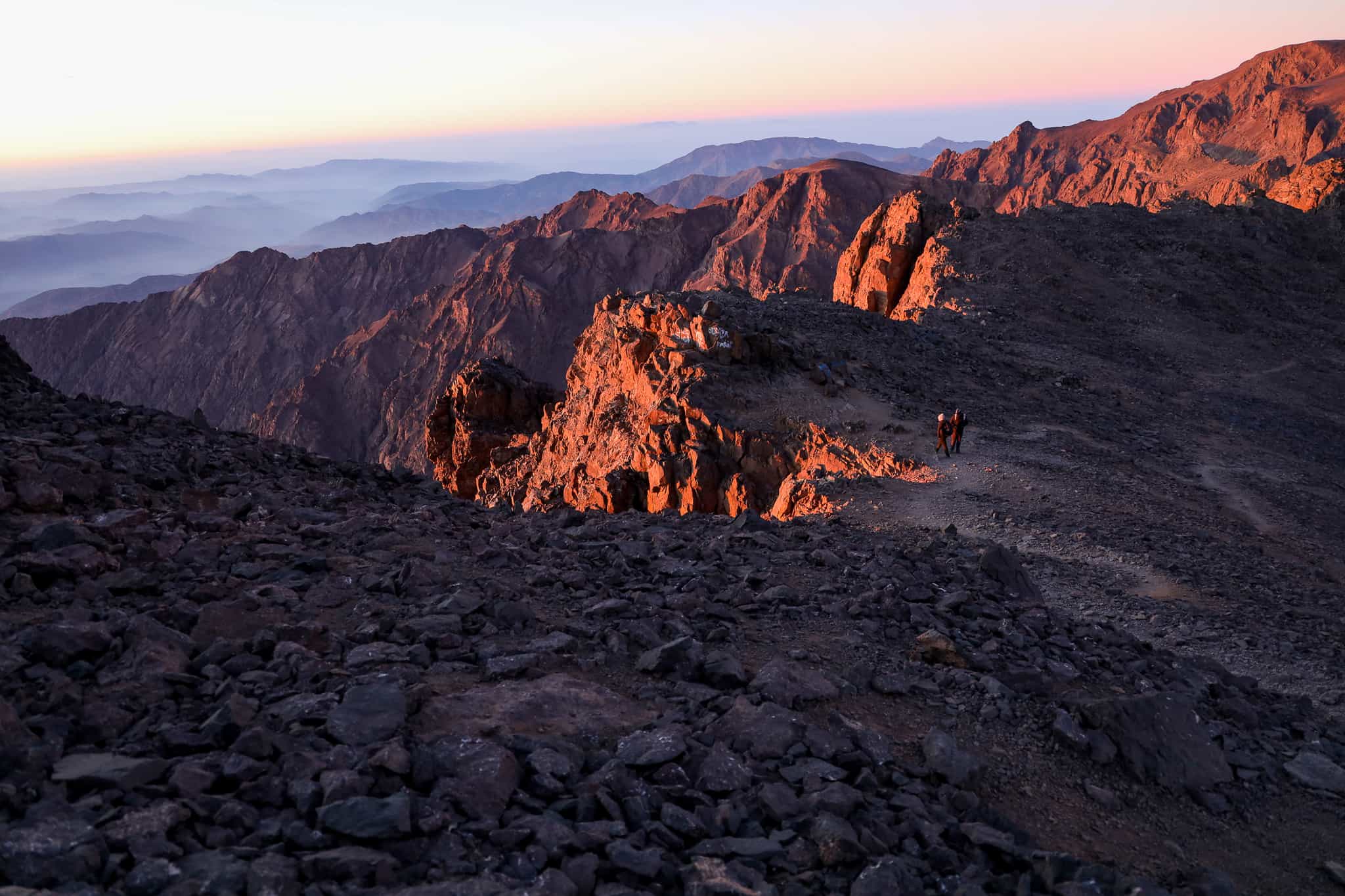
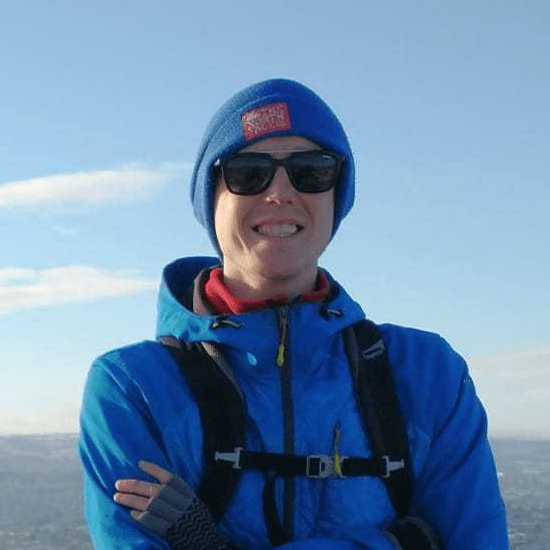
Need help finding flights?
From logistics and how to get there, to fitness, group dynamic and trip difficulty, Rory and his team of friendly experts are on hand to help.
We've got your back
Guaranteed to run
All Much Better Adventures trips are now guaranteed to run. Once you’ve booked your spot you can immediately make your travel arrangements, no uncertainty, no hanging about (excludes 'request to book' departures). Full details
Flexible payments
Secure your spot with the minimum deposit and pay off the remaining balance in as many instalments as you like, with no interest or fees. Full details
Happiness Guarantee
We’re so confident you’ll have an amazing time we’ll put our money on it. Full details
Full financial protection
To give you complete peace of mind Much Better Adventures is backed by ABTOT, ABTA and ATOL memberships. Full details
Tried & Trusted
Much Better Adventures is rated ‘Excellent’ on Trustpilot with over 1000 verified trip reviews averaging 4.8/5.
Connect before you go
You'll be invited to join a WhatsApp group to get to know each other before your big adventure together. Full details
DEPARTURE DATES
Saturday 9th August 2025
to Wednesday 20th August 2025
